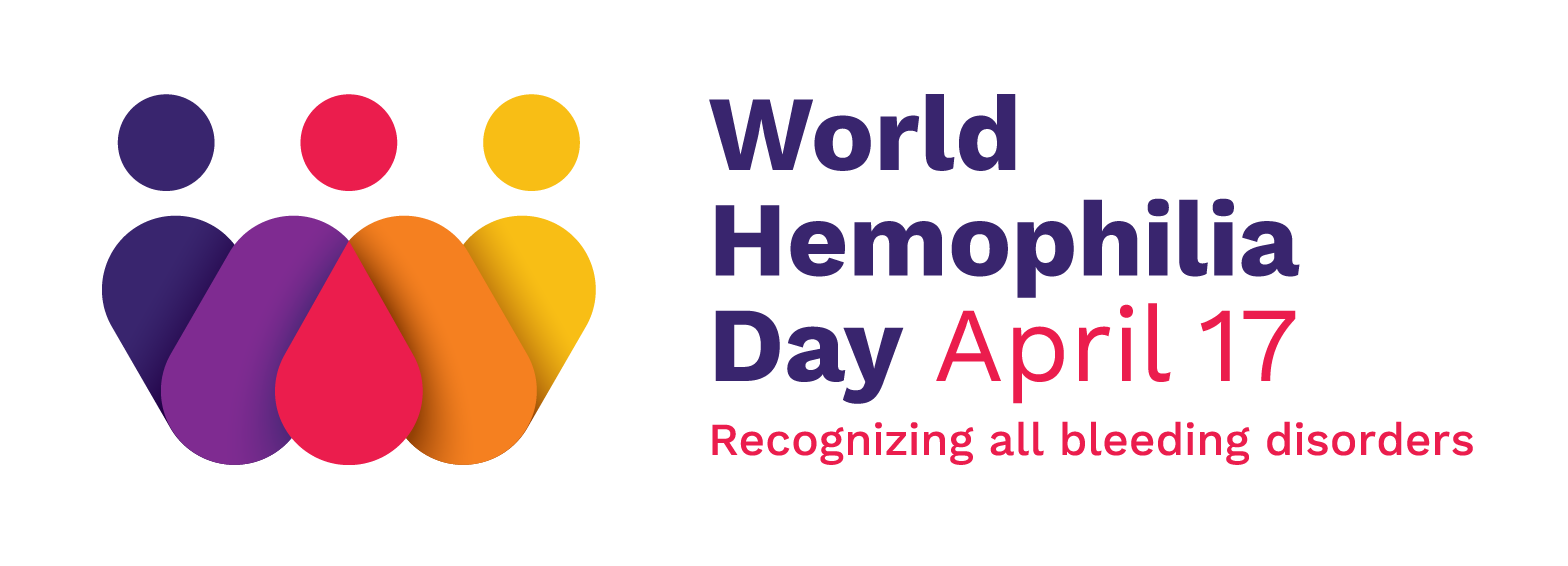

Discover stories about how bleeding disorders have affected people and their loved ones.
The content published on this site has been uploaded by third parties and is not representative of nor endorsed by the World Federation of Hemophilia.
Speaking Up for China’s Women with Hemophilia: My Story and Theirs
As the daughter of a man with hemophilia, a woman with mild hemophilia myself, and a former sufferer of heavy menstrual bleeding, I cannot remain silent after discovering the vast gap in awareness and care for women with hemophilia in China.
For 18 years, I never suspected that I might have a bleeding disorder—largely because China’s public education and medical resources on hemophilia are outdated, school textbooks still claim that female carriers never show symptoms. I dismissed my heavy periods as normal and ignored signs like frequent bruising and bleeding gums.
It wasn’t until I came across educational materials from the World Federation of Hemophilia (WFH) that I learned: carriers can indeed be patients.
At 18—seven years after my first period—I used the PBAC method for the first time and found I was losing 200 mL of blood every cycle.
At 18—after living with symptoms for 18 years—I took the BAT bleeding assessment and scored a 7.
At 18—just ten minutes before entering surgery for appendicitis—I had my clotting factor levels tested for the first time, discovering they were only at 12%. The surgery was immediately halted.
At 18—I knew for the first time that, I was, in fact, a person with hemophilia.
And I know I am not alone.
Since April 2024, I’ve been traveling across China giving talks and meeting other women with hemophilia.
Many of them do not speak English, cannot use computers, and have never shared their stories—yet their suffering deserves to be heard.
Today, I would like to share the voices of women in China with WHD stories.
Her body had been crying out for help for years, but no one listened—until she nearly lost her life on the delivery table.
She had always bruised easily, bled from her gums, and had wounds that took too long to heal. These symptoms were dismissed as “just being weak.”
Her first challenge came during the birth of her older son. The bleeding was significant, but her concerns were brushed aside:
“That’s just childbirth—it’s normal to bleed,” the doctors said.
Her son was later diagnosed with hemophilia, and she quietly shouldered the burden of care.
Years later, she had a second son via C-section at a county hospital.
She told the doctor: “My older son has hemophilia—should I be worried?”
The doctor replied: “You’re just a carrier. It’s fine.”
It wasn’t.
That night, blood began pouring from her surgical wound. Her bedsheets were soaked.
Panic broke out. The hospital lacked experience and resources.
She remembers hearing her name faintly through a haze, as she slipped in and out of consciousness.
Later, she learned that she had been issued a critical condition notice.
The wound had split open, and the hospital—unprepared and without coagulation factor VII concentrate—barely saved her life using whole blood transfusion.
Only after this traumatic experience did she discover: her own clotting factor was around 20%.
She, too, was a person with hemophilia.
Later, when she needed heart surgery, she knew she required clotting factor.
But unlike male patients, she could not receive insurance reimbursement. The medication would cost over 100,000 RMB(13,870 USD) out-of-pocket, more than her yearly income.
Looking back, she said:
“Every time a doctor dismissed my concerns, every time I got lucky, it was my life they were gambling with.”
One girl from northern China wore thick cotton pants in winter—yet her legs were always covered in large bruises.
Another, from the south, loved jump rope and dancing—but was constantly sore and bruised after play.
The northern girl told herself the blood when brushing her teeth was “just sensitive gums.”
The southern girl thought her childhood nosebleeds were just clumsiness.
Both were anemic and fatigued. Both were told: “It’s just your constitution—be strong.”
Both daughters of hemophiliacs. Both thought they were alone.
Until one day, they met—and realized they shared the same invisible story.
They talked about hiding their symptoms from family, doctors who said: “You’re just a carrier—nothing to worry about,” and the shame they felt about needing accommodations in dating, work, and life.
The northern girl feared hospitals—until she fainted from iron-deficiency anemia(IDA).
The southern girl actively sought care—yet most doctors had never heard of women with hemophilia.
The northern girl used 25 daytime and 6 nighttime pads per cycle. She had to wake up at night to change them.
The southern girl regularly stained clothes and bedsheets, experiencing dizziness and exhaustion during her period.
When they finally estimated their blood loss using PBAC:
The northern girl lost 187 mL per cycle, she lost 85% of her body’s blood volume yearly—equivalent to 4.8 bottles of 500mL
The southern girl lost 203 mL, lost 92% yearly—that’s 5.2 bottles.
The northern girl never tested her factor IX level.
The southern girl tested her factor VIII—only 19%.
They were not merely “carriers.”
They were women with hemophilia.
“I can’t run or play soccer. If I get hit on the head, it could be very dangerous.”
—Ningning, 7 years old, diagnosed with Factor VII deficiency
We met Ningning, a bright, cheerful first grader who loves drawing(image attached).
She enjoys light games like hopscotch and tag—but knows not to do anything that might cause bleeding.
At age 3, she had a nosebleed that lasted two days, ending in a collapse.
Her parents were sent from county to city hospitals, only finding help in a major hospital in Guangzhou.
Her mother recalls: “There was so much blood, it even came out of her eyes.”
Ningning was diagnosed with a rare bleeding disorder: Factor VII deficiency. Since then, her family has faced tremendous pressure.
The targeted treatment—Factor VII concentrate—is not yet produced in China. The only available option is an imported American drug, priced at 5,000 RMB per dose(693 USD), equivalent to the family’s entire monthly income.
Unable to afford this regularly, they turned to a cheaper alternative: a domestic “complex concentrate”, costing a few hundred RMB per dose.
It is less effective and comes with greater side effects—but with no domestically approved Factor VII yet available, they had no other choice.
Ningning is used to injections now. She says: “It doesn’t hurt if I stay still.”
She’s braver than many adults—but she shouldn’t have to be.
She is one of hundreds of thousands of girls and women with bleeding disorders in China, still too “invisible”—to doctors, to insurance systems, to society.
They long to run, dance, and go to gym class—but they need more awareness, compassion, and policy change.
Tingting’s very first period was a crisis. She bled so heavily she couldn’t stay in class.
The blood soaked her seat. She nearly fainted.
She was hospitalized and eventually diagnosed with rare Factor VII deficiency.
Now, every month, she needs injections to control the bleeding.
She’s traveled from hospital to hospital, relying on medication just to live a normal school life.
But after physical activity—running or sports—she suffers severe joint and muscle pain.
No matter how hard she trains, she’s unable to complete her physical education exam.
Her mother says:
“She’s academically strong, but missing 20 points in the high school entrance exam’s PE section might ruin her chances.”
They’ve tried hormonal treatments, but the side effects were too severe.
Now, she comes home after school during her period to receive clotting injections.
When clinics refused to administer the shots, her mother learned to do it herself.
“I’m better than the nurses now,” she jokes.
Their fridge is filled with medicine, not food.
Each vial costs hundreds of RMB. She needs over ten a month. None are covered by insurance.
These stories represent only a fraction of the women I’ve met. They are strong, but they should not have to suffer in silence.
Girls and women with bleeding disorders have long been overlooked in global care systems, and even more so in countries where diagnostic and treatment resources are limited.
In China, many are still undiagnosed, misdiagnosed, or under-treated simply because of their gender.
We established a organization named WGH38417 in China. You could see our efforts at our website. Contact me via Reddit.
We call on the global bleeding disorder community—researchers, clinicians, policy advocates, and patient leaders—to:
The title for 2025 Hemophilia day is ‘Access for all: Women and girls bleed too’.
Let her be heard. Let her be diagnosed. Let her be safe.
MD MOMINUL HOQUE
Founder, Disabled Rehabilitation Foundation (DRF), Dhaka, Bangladesh
Executive Director, Uttara General Hospital Ltd., Uttara, Dhaka, Bangladesh
Chairman, Mayer Hasi General Hospital, Ashulia, Dhaka
At the Disabled Rehabilitation Foundation (DRF), we believe that every individual, regardless of physical ability or financial condition, deserves access to quality healthcare and rehabilitation. Our journey began with a vision—to create a society where persons with disabilities receive the support, care, and opportunities they need to lead independent and fulfilling lives.
Since the year 2015, we have been working regularly with hemophilia patients. Our organization, DRF (Disability Rehabilitation Foundation), has so far been providing medical support to a total of 170 hemophilia patients. The treatment expenses have been managed through personal initiatives and with funding from the DRF Foundation.
In particular, we have been purchasing Factor VIII and Factor IX to provide the necessary treatment to patients. However, bearing these expenses is becoming increasingly difficult for us.
We believe that if the World Federation of Hemophilia (WFH) provides us with factor support, it will serve as a significant financial and emotional relief for our patients. This assistance will help ensure continuous and effective treatment for them.
On this WHD (World Hemophilia Day) 2025, I wish all hemophilia patients around the world good health and a bright future.
We sincerely hope that WFH will stand by us and extend its support in this regard.
Regards
Md Mominul Hoque
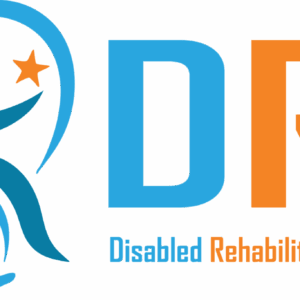
Living with Hemophilia, Thriving with Hope!
My name is Siam Ahmed, and 15 years old. Since birth, my life has been a little different – I was born with a rare bleeding disorder called Hemophilia-A. Even a small cut can lead to prolonged bleeding. When I fall while playing, others get up and carry on, but for me, it can turn into a serious and painful ordeal. The bleeding doesn’t stop easily, and the pain is often so intense that it keeps me awake at night.
My family’s financial situation is modest. I have no father, 5 years ago he is died of road accident. My mother is a laborer. The treatment for Hemophilia is expensive – I regularly need a medication called “Factor VIII” to help my blood clot. Unfortunately, I couldn’t always afford it. There was a time, when I truly believed this condition would bring my life to a halt.
That’s when the DRF Foundation (DRF) became my light in the darkness.
DRF Foundation (DRF) didn’t just support me with medicine – they reminded me that I wasn’t alone. They covered the cost of my treatment, arranged regular medical follow-ups, and even supported my education. Their kindness and commitment gave me strength. Because of them, I can now attend school regularly, and more importantly, I have begun to dream again – to imagine a future where I can grow up and help others, just as DRF Foundation (DRF) has helped me.
Hemophilia is a part of my journey, but it doesn’t define who I am. DRF Foundation (DRF) helped me discover the courage to say, “Yes, I can.”
Thank you, DRF Foundation (DRF) , for standing beside me when I needed it most. You didn’t just support my health – you restored my hope.
Hey! I’m Devang, 23, from India. I do freelance social media marketing, which lets me work from home on my own terms. Alongside that, I’m also preparing for government services—that’s the long-term goal.
As a kid, I was super active. But because of low Factor VIII levels, I had to deal with a lot of internal bleeds—some pretty scary, even life-threatening… I remember being in hospital for months multiple times when i was a kid. Still, thanks to my parents’ support and resilience, I managed to have a pretty healthy and active teenage life.
In the last 6–7 years though, things changed. I developed severe target joints, and honestly, it’s impacted my life in more ways than I can count. That constant feeling of weakness, of not being able to do what others around you can… yeah, I know that feeling too well.
But here’s the thing—I don’t see it as a struggle. It’s a fight. Every single day. With the condition, with its complications, and everything it tries to take from you.
What’s helped me? Staying informed. Learning about treatments and management. Being part of the community—online and offline. Talking to doctors regularly. Staying in touch with my local HTC and haemophilia chapter.
Because of all that—and the people around me—I’ve been able to keep my joints working pretty well. No major deformities so far. Yes, I’ve got haemophilic arthropathy too, like many others. But trust me, there’s always a way to move forward and that’s what I’m doing currently! Fighting my way out to more healthy joints.
You’re not alone in this. Keep learning, keep fighting, and most importantly—keep showing up.
If you wish to connect, my email is: devangagarwal0211@gmail.com
Professor of Hematology
Bangabandhu Sheikh Mujib Medical University (BSMMU), Dhaka, Bangladesh
HTC, Chairman- Lab One Foundation & Director, WBDR- HTC (BSMMU)
We are currently providing care and support to over 800 registered hemophilia patients through our Hemophilia Treatment Centers (HTCs) at BSMMU and Lab One Foundation. Our services include outpatient, inpatient, and emergency care facilities tailored specifically for individuals living with hemophilia.
Most of the treatment factors we administer are generously provided through the Humanitarian Aid Program of the World Federation of Hemophilia (WFH). Due to the limited supply, implementing a prophylaxis protocol remains a challenge in our HTCs. We sincerely appreciate WFH’s continued support through factor donations and the WBDR HTC Support Awards, which are invaluable to our operations.
Our dedicated HTC nursing staff regularly participates in online training programs organized by the WFH WBDR team, which has significantly enhanced the quality of care we provide.
We proudly celebrated World Hemophilia Day (WHD) 2025 through a series of impactful events. These included an awareness rally, a scientific session, and a round-table discussion involving key stakeholders such as the Rotary Club, Director General of Health Services, Ministry of Health, university authorities, social workers, and representatives from print and electronic media.
I am honored to serve as the Chief Coordinator for the development of the National Hemophilia Guideline, which has now been finalized and is awaiting official declaration.
The Government of Bangladesh has also extended support in purchasing clotting factors for selected government HTCs. However, HTC, BSMMU and HTC, Lab One Foundation (LOF) are non-governmental organizations and thus rely entirely on humanitarian aid and philanthropic contributions. HTC LOF operates 24/7 with full emergency facilities, including a blood bank, laboratory, operating theatre, and a dedicated team of doctors, nurses, and support staff.
One of our patients, Sadian, a 17 years old with Hemophilia A who has developed inhibitors, is currently receiving treatment with Emicizumab.
Given our ongoing needs and the rising number of patients, I would like to kindly request WFH to consider extending their support further through factor donations and WBDR HTC Support Awards.
We remain hopeful that World Hemophilia Day 2025 will mark a new era in ensuring access for all, especially in line with WFH’s current focus on bleeding disorders in women and girls.
Warm regards,
Prof. Dr. Md. Salahuddin Shah
Professor of Hematology
Bangabandhu Sheikh Mujib Medical University (BSMMU), Dhaka, Bangladesh
I am Khandaker Amirul Islam, Haemophilia – A patient working as a volunteer & patient counselor of HTC Lab One Foundation. My WBDR ID number is 28569, HTC Lab One Foundation, Uttara – 1230, Dhaka, Bangladesh.
@Success History@
Last four months ago, suddenly I felt severe chest pain & attended at HTC LOF. I was a regular attendee for my routine follow up at HTC Lab One Foundation under Professor Dr. Md. Salahuddin Shah.
He arranged for my admission under his supervision at BMU ( BDMMU). And finally after angiography I had been got two heart rings implanted in my heart from Cardiology Department of Bangladesh Medical University (BSMMU).It was a very difficult task for me and it was not so much easy that it could be done from any place but by the grace of Almighty Allah Prof.Dr. Md. Salahuddin Shah & Cardilogy Department helped me a lot. I have received required factors from HTC LOF, HTC BSM ( BSMMU) & NMO (HSB). Fortunately my life is safed. I am grateful to WFH Humanitarian Aids HTCs & HSB.
Now I have to take Factor Vlll after every 15 days.
Most of the haemophilia patients in our Country are very poor. So we need increased number of factors for our survival.
We have observed World Hemophilia Day 2025 through rally, Scientific seminar & patients counselling at HTC LOF.
I sincerely appeal to the WFH Humanitarian Aid & WBDR team to consider allocating more clotting factors to HTC, Lab One Foundation & this HTC remained open for 24 hours.
I believe this will enable the organization to save the lives of many more hemophilia patients and continue to provide compassionate support to them.
On this special day, I wish all hemophilia patients around the world good health and a bright future.
My son Owen has severe Hemophilia, today my office show support and love. Team Owen!!!
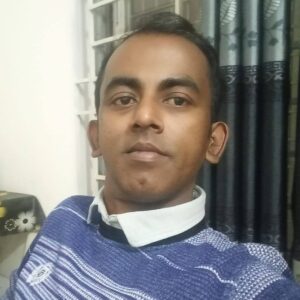
I am Hafizur Rahman, WBDR Data Management and Patients Councilor, HTC, Lab One Foundation, Dhaka, Bangladesh.
From my professional experience, I have closely observed the sincere and selfless efforts of the Honorable Sir Prof. Dr. Md. Salahuddin Shah, Chairman of Lab One Foundation, who has always stood beside hemophilia patients. He has been relentlessly working to ensure their healthy lives by providing free treatment, essential medicines, fresh frozen plasma, and clotting factors.
Through regular communication with patients and listening to their stories of daily struggles, I have come to realize the immense battle they fight every day just to survive and stay healthy. Especially when unexpected bleeding occurs in any part of their body, Lab One Foundation, always remains prepared to provide the necessary medicines, factors, and fresh frozen plasma as swiftly as possible.
I would like to express my heartfelt gratitude and deep respect to the Honorable Sir Prof. Dr. Md. Salahuddin Shah, Chairman and the entire team of HTC, Lab One Foundation, for their compassionate and humanitarian efforts.
On the occasion of World Hemophilia Day 2025, I sincerely appeal to WBDR to kindly consider the allocation of clotting factors to HTC, Lab One Foundation, . I believe this will enable the organization to save the lives of many more hemophilia patients and continue to extend its compassionate support to them.
On this special day, I wish good health and a bright future to all hemophilia patients around the world.
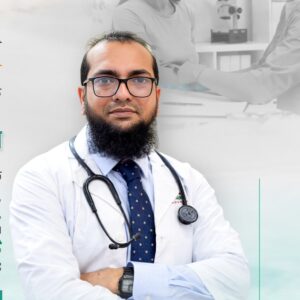
“A Silent Bleed, A Silent Loss”
As a Clinical Haematologist dedicated to serving patients with bleeding disorders, I often meet individuals whose lives have been shaped by unrecognized or untreated conditions. Recently, I encountered a deeply moving case that reminded me how crucial awareness and early diagnosis truly are.
A young woman was admitted to the gynaecology ward during her first postnatal period with uncontrolled bleeding from a surgical wound following an emergency hysterectomy. Her story unfolded tragically: after a Caesarean section, excessive bleeding began and could not be controlled even after uterine closure. The obstetric team, in a desperate attempt to save her life, had no choice but to perform a hysterectomy.
When I was consulted, I delved deeper into her medical history. She revealed she had experienced heavy menstrual bleeding (menorrhagia) since menarche. Yet, due to social stigma and lack of awareness, neither she nor her family ever sought medical advice. Her symptoms were normalized, explained away by vague cultural beliefs and silence.
Unfortunately, that silence cost her dearly—her ability to become a mother was taken away in a moment that should have brought her joy. What could have been managed with timely diagnosis and care turned into irreversible loss.
This story is a painful but powerful reminder: bleeding disorders in women are underrecognized, under diagnosed, and often hidden behind shame or misinformation. We must speak up, educate, and ensure that no one loses their future to a treatable condition.
On this World Hemophilia Day, let us reaffirm our commitment to break the silence, raise awareness, and advocate for early diagnosis and care for all—especially the women and girls who bleed unseen.
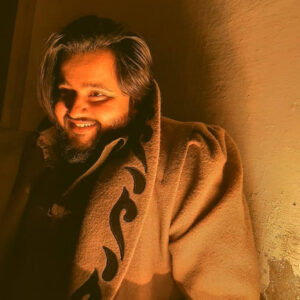
“Strengths with Deficiency”
I’m not writing about my so called Royal Disease clotting factor😁, it’s about those moments which are almost deficit from my life, maybe it’s the feeling of majority persons with bleeding disorders.
Your childhood will be ruined by your pressurized limited life, your special events like Eid, Christmas and Diwali or even marriages.
I missed my school life I wish to be punished by my teacher but because of my family doctor they don’t allow my teachers to punish me, i never like to be special (sympathy)boy.
But when the creator take something from you he gives you extra strengths like, Endurance you will not take painkillers for your pain because you knew that, it will not work on your severe pain.
You will always be Aware of coming struggles and your survival strategies.
Sometime there will be nothing left for the cure, but you will Fight like warrior.
Whenever you felt tired in your life you will find your Parents beside you. It’s the beautiful climax of everyone life story, but in our (community🩸) life they have a role of doctors, consultant, physical therapist and nutritionist, sometime friend!
“Life will always hit Hard if you hemophiliac or”
Today is World Hemophilia Day
It has been 3 years since my son was diagnosed with severe hemophilia A. The past years were very challenging for us. Knowing that our country have limited knowledge to rare bleeding disorders, it is also hard for us to look for medical practitioners who knows how to infuse for hemophilia patient.
Recently, our son got into a mild accident wherein he accidentally stumbled and hurt his right foot. He is currently in the province that lacks medical care for patient like him. In order for us to get him treated, we connected to HAPLOS Hemophilia Philippines – an organization for patients with bleeding disorder. I called one of the officers and asked help for the members on nearby areas. Several calls and coordination were made, and luckily we were able to find one. The infusion started and right now he is on recovery mode.
Given that our son is a 3 year old boy and a toddler, it is really hard for us to stop him from moving, as he seeks adventures and obstacles. His pain tolerance is so high that he can endure the pain. But despite that, I am so proud of him being so strong and healthy.
As a mother and a carrier of Hemophilia, I also feel symptoms like easily bruising, heavy menstrual and prolonged bleeding and joint pains across my knees. There are days where the pain won’t let me sleep. But overall, I was able to get through with it.
I am so thankful that even in dark days, the HAPLOS Hemophilia Philippines will always be there as a support system (emotionally and mentally) to mothers like me and patients like my son. Ever since we joined the organization, there was not a time that they did not answer all the inquires I had. They helped me and educated me more about this and engaged with different members.
And to my family especially to my husband, I am so thankful that despite our situation, they are always there to help us during the hard times, added by the people around us who supported us in this journey.
Lastly, as we celebrated the World Hemophilia Day, I want everyone to know that this rare bleeding disorder is just around the corner. To share with them what this is and for them to stop judging the Hemophilia Patients that they are limited on the things they can do, and cannot do normal things like other people does.
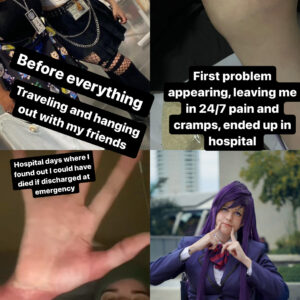
I found this page while searching about my hemophilia diagnosis.
My Name is Cindy Nogueras, 28, from Puerto Rico. Back in July 2023, while I was unknowing fighting for my life was diagnosed with Hemophilia factor XII also known as HAF deficiency, Hageman factor deficiency, Hageman trait. Factor XII deficiency is a rare genetic blood disorder that causes prolonged clotting (coagulation) of blood in a test tube without the presence of prolonged clinical bleeding tendencies.
It is caused by a deficiency of factor XII (Hageman factor), a plasma protein (glycoprotein).
The condition caused bleeding in my knees which has left me temporarily in a wheelchair, and stiff leg which can’t stretch due to the loss of the meniscus and cartilage.
This condition is also accompanied by agammaglobulinemia, which means I don’t have the protein which creates the immune system, and I will be having infusion for the rest of my life to treat it.
Although I Was mostly in and out of the hospital growing up, no one ever knew why, once I had a bad fall no one couldn’t tell me why my meniscus and cartilage were getting wear out. Until May 2023, I ended up in wheelchair with a bad pain and bad cramp from leg to knee, my rheumatologist sent me to emergency in suspicion of a sepsis on my knee.
I stayed in the hospital for about 19 days, 4 days in emergency room and 15 days up in a room, with many doctors and specialists visiting, from cardiologists, rheumatologists, orthopedics, hematologists, internists, immunologists and there they found my hemoglobin was in 4 and dropping, a bacteria in my blood, the hemophilia and the agammaglobulinemia.
Although I know neither have a cure, and will always be a part of me, I haven’t stopped doing what I love, I go to events of cosplay, work related events, and my photography hobby. Even if I can’t work now at what I got a degree on, I’m happy to be alive and continuing what I’m doing, with my family supporting me through this journey, mentally and physically.
health insurance doesn’t cover everything but we do everything we can to deal with it.
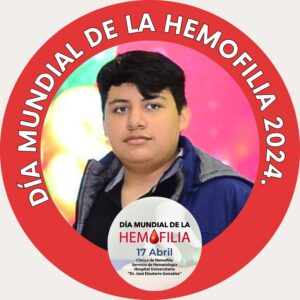
Yo bien agradecida con la lic.laura Paez y la doc.laura villareal de la clínica de hemofilia del hospital universitario.ya once años que mi hijo es atendido ahí ,es una excelente atención con su gran equipo multidiciplinario,nos han enseñado tantas cosas ,de como debemos llevar una buena profilaxis y poder nosotras mismas infundir a nuestros hijos.gracias a su atención podemos llevar una vida normal .
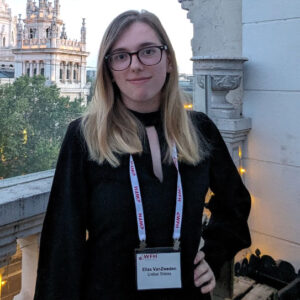
My name is Eliza VanZweden, and I am writing to share my journey as a woman living with Glanzmann’s Thrombasthenia. GT is a rare bleeding disorder caused by a platelet defect in which platelets do not aggregate to stop bleeding.
I was diagnosed shortly after birth in 1999, due to symptoms of birth trauma. My path to diagnosis was certainly more painless than others, as my older brother had already been diagnosed with GT. Growing up, I struggled with many nosebleeds which would often bleed for days. For these and other serious bleeds like throat and GI bleeds, I received many on-demand platelet transfusions in my youth. There are very limited treatment options for GT patients, who are often left to resort to platelet transfusions, Factor VII bypassing agents, or tranexamic acid. There are no prophylactic options available for GT patients currently.
As I grew, I learned about the risks associated with platelet transfusions – they should only be used to stop bleeding in emergency situations due to the risks of developing antibodies. This left me anxious – my only treatment option could become ineffective at any time and fail me in an emergency situation when I need it the most. The trust that all my bleeds will be solved with a platelet transfusion was replaced with worry surrounding every bleed and debating every time I bleed how much is “too much” before I go in for treatment – does a nosebleed need to last 8 hours before getting a transfusion? Or should it be reserved for one that is bleeding for 4 days?
As I transitioned to adulthood, I have recently faced my most challenging symptoms. My health is no longer only focused on my bleeding disorder, but also encompasses my bone, reproductive, and mental health due to long time suppression of periods using hormonal therapies. More recently, I suffered a thrombotic event which left me with a portion of permanent blindness in one eye. This experience, as well as my struggles to control my nosebleeds and menstrual bleeding has left me hypervigilant of how being a GT patient affects every aspect of my health.
Although I still struggle with knowing when to get treatment for severe bleeds and don’t have access to prophylaxis treatment, preventative care has still been key in managing my bleeding disorder. This involves minimizing my risks in every activity or environment, and being prepared for every situation.
The bleeding disorders community I have come to know through the World Hemophilia Foundation and the National Bleeding Disorders Foundation (NBDF) in the United States has proved to be an invaluable support and resource. I have met others who have the same bleeding disorder as I have and am inspired to be an advocate for this community <3
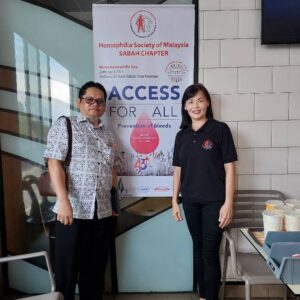
I have a child, named Aaron, who was diagnosed with Hemophilia A Severe, when he turned 1 year old in year 2010. He had an episode of intracranial hemorrhage at the age of 2, which almost cost his lives and along the way, had many joint bleeds episodes. At that moment in time, all the hospitals in Sabah, only provided On-Demand therapy.
I was fortunate to be able to communicate and gain knowledge from all the treaters from hospitals and universities, especially the hematologists. In early 2014, I had collaborated with a hematologist from the University Malaysia Sabah to organize a workshop for hemophilia patients in Sabah.
In end of 2014, I was approached by a strong advocate of hemophilia who is also the former President of Hemophilia Society of Malaysia and former Vice President of World Federation of Hemophilia. He encouraged and guide me the way to initiate and set up a Hemophilia Society within my region.
So, in the year 2015, I was involved in advocacy in the form of Hemophilia Society of Malaysia Sabah Chapter because I believe in the power of action to create positive change. Advocacy allows me to use my voice and influence to address issues that matter deeply to me, such as supporting individuals with hemophilia.
By actively participating in advocacy efforts, I can contribute to raise awareness, influencing policies, and fostering a more inclusive and supportive society for those affected by this condition.
Through advocacy in action, I can make a tangible difference in the lives of individuals with hemophilia, helping to ensure they receive the care, understanding, and opportunities they deserve.
I managed to establish a strong network of stakeholders ie.Ministry of Health(Sabah), hospitals(throughout Sabah and Kuala Lumpur), to ensure that the society stays updated with the latest advancements in hemophilia treatment and care. Through strong networking, it facilitates collaboration among the healthcare providers, patients, caregivers, and policy makers. It also increases the society’s ability to access resources.
As a 2024 SSMF Scholarship recipient, I will make the Hemophilia Society stands as a beacon of strength and hope, transforming lives and reshaping the narrative surrounding this challenging condition.
Hola mi nombre es Patricia naranjo y soy mamá de Diego Blankevoort de 7 años quien tiene Hemofilia A severa soy portadora de hemofilia mi padre tenía hemofilia y cuando nació mi hijo nunca imaginé que el podría tener y así fue desde un año que Diego usa la profilaxis el se inyecta hoy en día 1000 de liofilizado y nos a echo la vida más fácil y para mí niño la vida normal estoy muy feliz por su tratamiento ya que si el Diego se pone mal nunca debe de faltar a su tratamiento siempre al pie de la letra vamos hoy en día yo aprendí a inyectarlo gracias al centro de hemofilia del Hospital Roberto del Río y asus profesionales en especial ala doctora Verónica Soto la mejor doctora que le tocó a mi hijo y así vamos viviendo día a día su enfermedad se puede vivir en armonía y tranquilidad.
I am a mom of four beautiful children, with one having moderate Hemophilia A (however, he bleeds as a severe). He is my second youngest and most defiantly the most wild out of my bunch. From 7.5 years ago, when we found out Elias has hemophilia shortly after birth, life has has it challenges but most importantly its brought us into an amazing community that I cannot be grateful to be apart of.
When Elias was first born, we knew pretty soon after birth, that something was not right. He bled, and bled, and bled for days. We later were finally transferred to Vanderbilt Children’s Hospital where we found that he had Hemophilia A. What a day that really was. From being exhausted from having a new baby, to finding out that he has a serious condition, it really took a toll on me, as his mom. From that day though, I knew that I had to become Elias’ expert of his body and his condition because I was not only a mom now, but his advocate as well.
Early on, things were okay and we treated as needed. He started walking, and we had to have a few infusions from him falling and bruising that just would not stop growing. He started talking, and we had multiple infusions from mouth bleeds from him biting his tongue. When he was 2, we spent Christmas Eve in the hospital from an ankle bleed that we assume he got from walking on gravel (but who really knows). A few months later he got another joint bleed but this time in his elbow that we concluded had to of been spontaneous. At this point, I knew I had to stand up for him and decided that we needed to start on prophy because I could not deal with my son being in so many pain and treating afterward. After much fighting with insurance, he was finally approved to start emicizumab.
Emicizumab has absolutely been life changing for us. While I had never limited Elias from doing fun boy things, like riding his bike, jumping on a trampoline, doing backflips off the couch, riding a dirt bike, you know all the “fun” things that kids like to do, emicizumab sorta gave a peace of mind as well. Literally 3 months after his elbow bleed, he ended up breaking his other arm while in a bouncy house, ONLY MY CHILD RIGHT? LOL. We infused as a precaution but I really believe that because he has emicizumab, his injury was not worse.
Elias is now 7.5 and is NOT a poster child of Hemophilia. I let him do all the fun things that he wants to do (for the most part anyways). I fully believe that if I do not let him learn his own limitations now and let him “live in a bubble” then things will only get worst as he gets older. He plays baseball and is aggressive in his position and I think its great! He does not let Hemophilia define his life and I don’t either. Our life may be a little different from others, we may have to do things a little differently, but as a mom of hemo hero, my mind now thinks differently too.
We have started bringing awareness to our local community as well as bringing it all the way to Washington D.C. Nobody knows if they simple just don’t know. It is our job to bring attention to the matter and bring the awareness because I too, was one of those who had no idea that the word “hemophilia” meant. I love this journey that we as a family are now embarking. Elias is learning to advocate for himself, his siblings are also aware and are able to bring awareness to who around them too. Hemophilia not only affects the one who has it, but the entire family as a whole. We must support, advocate, and deal with it together to come out stronger and better than ever. Hemophilia will never stop Elias, it just may try to slow him down, but we are there to support and push him, because it will never win; we will not let it!
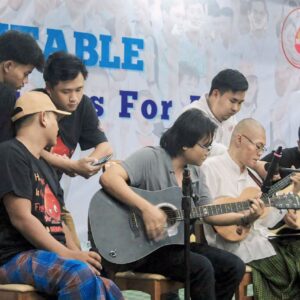
Dear All,
My name is Phyo Khant Kyaw, and I am writing to share my journey as a severe Hemophiliac with Factor-IX deficiency from Myanmar.
In 1998, I was faced with the harsh reality of my condition when a simple injury to my gum led to a diagnosis that changed my life forever. At that time, diagnosing Factor deficiency in Myanmar was a challenge, and I had been on a journey over thousand blood transfusions.
Despite the countless transfusions, my knowledge of hemophilia remained limited. When I became a member of the Myanmar Hemophilia Patient Association (MHPA), I was able to connect with others facing similar challenges, and together, we shared knowledge, experiences, and support that empowered me to navigate my condition with greater confidence and understanding.
One of the most harrowing moments of my journey was experiencing an intracranial hemorrhage during my childhood. I was engulfed by fear, unable to speak, and unable to see the light . However, care and treatment provided by Pf. Aye Aye Khaing, I got recovery within two weeks.
Until 2016, the absence of Factor-IX treatment left, resulting in deformities in both knees and my left elbow. However, in 2017, with the introduction of Factor treatment, a new chapter of hope began.
I am immensely grateful to the World Federation of Hemophilia (WFH), whose saving my life and the lives of countless others affected by this condition. Through their initiatives and advocacy, individuals like myself have been given a chance at life, hope, and a brighter future.
In closing, I extend my deepest gratitude to Pf. Aye Aye Khaing, the Myanmar Hemophilia Patient Association (MHPA), and the World Federation of Hemophilia (WFH).
With heartfelt appreciation,
Phyo Khant Kyaw
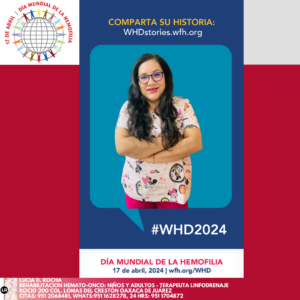
Terapeuta Hemato-Onco formada para peques con Hemofilia sin conocer que la vida me preparaba para atender a mi propia familia. Oaxaca-México
This is my Journey of living with Haemophilia.
When i was 11-year-old, there was great debate regarding my circumcision among the family. Elder members like my grandmother and uncles, remembering the death of my uncle due to non-stop bleeding, resulting from the circumcision as per the Muslim tradition in Sudan. My father, one of the admirers of Dr. Faroog Sidiqu, the reputed hematologist at the Khartoum Hospital, suggested that it is the doctor who would decide on it. My father was right. He could remember, the son was laying on the bed at that regional hospital, between life and death, bleeding for the third consecutive day. Doctors were puzzled and almost exhausted all options to stop this nasty bleeding from the nose. He took the journey from, after losing hopes, from Berber to Khartoum, not quite sure that his beloved son would make it. Dr. Faroog was in charge of the case. The child was admitted in the hospital, blood transfusions were made one bottle after another, and many tests were done.
– your son is confirmed to have a bleeding disorder, do you have any similar issues in the family? Asked Dr. faroog
-Yes, two of his uncles, mother’s brothers died at age of 9 and 13. Father replied.
-He is lucky to be born in an era that witnessed many improvements in the medical care of this clotting problem.
I was admitted at Khartoum Hospital for almost a week with the plasma infusion undertaken every 12 hours. the doctor assured there is a new medicine which would be a game changer in the lives of poor hemophiliacs. that was almost in 1971 when i was diagnosed and had my first treatment. My father and I came back to our home in the town of Berber, 360 Km north of the capital overwhelmed by the cheers of the relatives who presumed a miracle has been taking place and overloaded with many advice of the doctor on how to handle the case of boy. From that day i became a regular visitor to blood bank of Kh Hospital.
I went to the toilet, secretly wished to evaluate the efficiency of this medicine by myself. i was admitted because there was blood in my urine that lasted for couple of days. I came our rushing to my father, ” Yes, it is working dad, oh my God”.
What is working? asked my dad?
“The medicine” .i replied back………. “My urine turned to light yellow instead of red.”
it was a simple verification of the worthiness of the injected medicine. Color is changing from red to light yellow. i was stunned. my doubts turned into firm belief.
1976, i completed 10 years, with many self-awareness about the line that has been drawn. i sensed the attention of many eyes focusing on anything that i was doing. Playing football with my peers was a big taboo. I loved football and exhibited remarkable skills in playing. yet my friend would be very reluctant to let me play with them. They are afraid of the subsequences. At school the story was a bit different. The teachers were well informed about my case and warned that any physical punishment my lead to serious subsequences. I was very good at all subjects and topped the class. Not giving any teacher any reason to push me. Lashing the boys with whips was a common practice and the teachers were authorized to do it. when there a common punishment, the teacher would exclude me. some would make their own punishment for this strange boy. Mr. Amin, our math teacher, looked at me from face to toe and mockingly asked the class to stand up. it happened that i came late that morning and he was already in the classroom. He instructed the students to Welcome “His Highness” by singing the National Anthem. They did. He was so cruel to vent his anger in that way. i was down morally.
The same year, in the school holiday, my dad and i travelled to the capital by Half Express train. It was a privilege to travel to Khartoum, envied by my friends and give me times to narrate the wonders i have seen in Khartoum. They do not know that if it were not for this bleeding issues i would have never visited the capital. My wonder was that i had nothing this time to explain why we had to go to the capital. my health was great and no bleeding, being inside or outside.
The discussion was going on that morning with Dr. Faroog and some other big consultants providing more assurances to my dad that circumcision like any surgery would be efferently managed by the administration of the factor, factor 8.
Although i was cent per cent fit, i was admitted at the Pediatrics Section at the Hospital. Factor replacement was planned twice a day. My dad, noting the growing frustration inside me for being injected without a valid reason, he told me we planned to circumcise you. it is a simple procedure and there are no worries. I was a bit relived. Circumcision is something that relates to manhood in that closed environment. A man uncircumcised is not a man.
The day came. The news spread everywhere and our far and near relatives came to witness this “operation”. some of them, had no trust in the medicine at all, objecting seriously and surrendered to the will of my father who swear would never leave his son uncircumcised whatsoever. Three of the surgeons attended the surgery. Dr. Faroog set the hemostatic management plan with close monitoring of all essential parameters. After an hour i was pushed on a wheeled chair to the room. My aunts and other women ululated in joy. i spent around two weeks under the persistence of the medical team who left nothing for the chance. i was under the factor coverage for the entire period. Very minimal bleeding was observed. We returned to our hometown like a victorious army. when the train stopped at the station, we found a fleet of around 4 cars awaiting us. Celebration had to start and many cow blood were shed and many people were coming in to see the wonders, especially elders whom the occasion evoked their bitter memories of the earlier death of my two uncles.
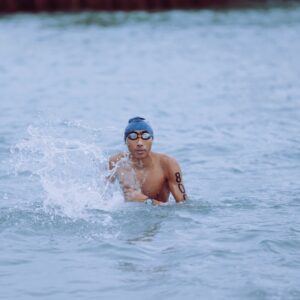
Growing up was challenging, as I had to constantly worry about when my next bleed is going to occur. Being placed on on-demand treatment regime means, I had to experience bleed first before I receive factor infusion, and as a person with severe Hemophilia A, I was never short of 1 bleed in a week during my childhood.
Thanks to the advancement of treatment and care in Malaysia, I benefited from prophylaxis treatment from age 22 onwards which significantly reduced my bleeding episodes, and now I am able to lead a healthy and an active lifestyle.
I hope and pray (and will be working hard too!) that more PwBDs will be able to enjoy the best possible treatment and care towards better control and prevention of bleeds.
Happy World Hemophilia Day!
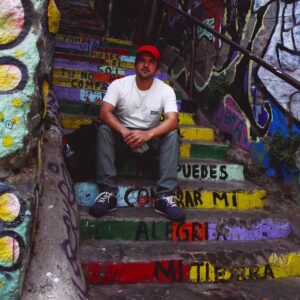
Hi there! My name is Francisco Antonio Calderón, and I want to share my story with you. At the age of 5, my life took an unexpected turn. While playing with my older brother, I had an accident that changed my life forever. I was diagnosed with hemophilia, a condition that affects blood clotting. At first, I didn’t fully understand the severity of the situation, but soon I realized that my life would never be the same as my classmates’.
Hemophilia prevented me from participating in sports normally and doing many of the things that kids my age did. I felt different and isolated. Sometimes, I was the victim of bullying by my peers, who didn’t understand why I couldn’t do the same things as them.
That’s when my parents decided to change my school. At first, it was difficult to adapt to a new environment, but soon I realized that this was an opportunity to start anew. I discovered that I had skills that my classmates admired, such as my ability to lead and motivate others.
I was elected president of the student council in my new school, and this experience changed my life. I learned a lot about leadership and discovered that I had the ability to inspire others and make a difference in the world.
After graduating, I studied a degree in Design, but I always had my true passion in mind: to help others who, like me, live with hemophilia. I started using social media to spread information about the condition and make it more visible to the general public. Today, through my Instagram account (@FactordeCoagulacion), I share my story and that of many others who live with hemophilia.
My ultimate goal is to study Journalism and create a foundation to help people with hemophilia in Chile. I know there is still much work to be done, but I am determined to make a difference in the lives of those who live with this condition. Thank you for listening to my story!
Spanish:
¡Hola! Soy Francisco Antonio Calderón, y quiero contarles mi historia. A los 5 años, mi vida dio un giro inesperado. Mientras jugaba con mi hermano mayor, sufrí un accidente que cambió mi vida para siempre. Me diagnosticaron hemofilia, una condición que afecta la coagulación de la sangre. Al principio, no comprendí del todo la gravedad de la situación, pero pronto descubrí que mi vida nunca sería igual a la de mis compañeros de colegio.
La hemofilia me impedía practicar deportes con normalidad y hacer muchas de las cosas que los niños de mi edad hacían. Me sentía diferente y aislado. En ocasiones, era víctima de bullying por parte de mis compañeros, quienes no entendían por qué yo no podía hacer las mismas cosas que ellos.
Fue entonces cuando mis padres tomaron la decisión de cambiarme de colegio. Al principio, fue difícil adaptarme a un ambiente nuevo, pero pronto descubrí que esta era una oportunidad para empezar de nuevo. Me di cuenta de que tenía habilidades que mis compañeros admiraban, como mi capacidad para liderar y motivar a otros.
Fui elegido presidente del centro de alumnos de mi nuevo colegio, y esta experiencia cambió mi vida. Aprendí mucho sobre liderazgo y descubrí que tenía la capacidad de inspirar a otros y hacer una diferencia en el mundo.
Después de graduarme, estudié Licenciatura en Diseño, pero siempre tuve en mente mi verdadera pasión: ayudar a otros que, como yo, viven con hemofilia. Comencé a usar las redes sociales para difundir información sobre la condición y hacerla más visible para el público en general. Hoy en día, a través de mi cuenta de Instagram (@FactordeCoagulacion), comparto mi historia y la de muchos otros que viven con hemofilia.
Mi objetivo final es estudiar Periodismo y crear una fundación para ayudar a las personas con hemofilia en Chile. Sé que todavía hay mucho trabajo por hacer, pero estoy decidido a hacer una diferencia en la vida de aquellos que viven con esta condición. ¡Gracias por escuchar mi historia!

My name is Rana Asad Ali, I am 19 years old and I have spent 19 years of my life with many difficulties. Once I got injured there was a lot of bleeding and at that time I did not know about hemophilia Then in 2016 my left arm bone was broken two operations were done, due to which I was bleeding a lot my family used to pay for the blood and due to the daily injury I could not even study properly I did intermediate and when my arm was operated for the third time someone told me about hemophilia and then I joined the hemophilia society Lahore and thanks to God I am fine till now.
I have inherited Factor V Leidon from my paternal line; my father has Factor V Leidon and activated Protein C deficiency, which he inherited from his father, which he inherited from his mother. All of whom suffered DVT’s at one point in their lives.
As a teenager, when my father had a DVT, I went to my GP and asked to be screened. When the results came back, I wasn’t told I had a specific “condition”, I was only told that my blood was “a little stickier than normal” but that it was nothing to worry about.
A few years down the line, it turns out it was something to worry about. It was when I was pregnant with my first son at the age of 20 that the midwife told me that I had Factor V Leidon. I would need to be consultant lead and would need to inject daily with Enoxaparin. As I had found out about the pregnancy quite late anyway, I didn’t start injecting until I was around 17 weeks. At 22 weeks we found that the baby’s growth was restricted due to lack of blood flowing through the placenta. At 24 weeks I was diagnosed with severe preeclampsia and admitted to hospital, being told that I wouldn’t be leaving until the baby was born. At 24+1 weeks, I developed HELLP syndrome and my organs started to collapse. I was given magnesium transfusions to protect my brain from any eclamptic seizures, before being rushed to theatre to deliver the baby. My platelets were so low that I was close to haemorrhaging. Our son was born on Christmas Eve 2014, at 24+1 weeks, weighing 480g. Despite being so premature, he was still much smaller than he should have been, indicating that the blood flow had been restricted for some weeks before I was diagnosed with preeclampsia. My life was very much touch and go for a few days; I wasn’t allowed to move out of bed, I was on large amounts of morphine and magnesium, having my bloods taken every 45 minutes to check my platelets (which were continuing to drop) and my liver enzymes (which were continuing to climb). I was getting worse before I was getting better. We had a very traumatic month over Christmas and the New Year, being transferred from hospital to hospital and surgery, all whilst I was still incredibly unwell and recovering from organ failure. Ultimately, our son’s prematurity resulted in his passing at 33 days old, on the 25th January 2015. We had some very difficult conversations with various specialists and made the heartbreaking decision to stop his life saving care, as everything that was being tried, didn’t have a good prognosis and it wasn’t looking likely that anything would be able to help him.
There is nothing for certain to say that the Factor V Leidon had caused the preeclampsia, however, there is a link. There is also nothing to say that beginning the injections any earlier would have prevented the preeclampsia and improved blood flow, but there is a chance.
It was decided that after such a risky pregnancy and complicated birth, any future pregnancies would be consultant lead from the very beginning. This put me at ease, slightly. I was told that I had no control over whether or not I get preeclampsia again because of the Factor V Leidon being a risk factor. Also, once you’ve had preeclampsia once, you are more at risk of it developing again. I was told that I just needed to make sure my body was as healthy as possible before I considered another pregnancy.
I overhauled my lifestyle completely to have another baby. I was in the gym, I was eating sensibly, and in the space of a year I had lost 5 stone.
It was now Spring 2016 and we decided we would try for another baby and I (very luckily) fell pregnant the same month. I was straight on the aspirin, folic acid, eating sensibly, still exercising lightly. I felt much better in this pregnancy and a lot more relaxed than I thought I would. My mother in law was a midwife, so I asked her to be my midwife, especially in those early stages. She referred me to a consultant straight away and a plan was put in place to begin Enoxaparin as soon as possible. We went away to visit family in Wales for the Augsut bank holiday, but the morning we got up to leave, I had stomach cramps and noticed a small amount of blood. I knew that spotting was common, especially in early pregnancy, so tried not to worry too much. The cramps didn’t ease off all day, despite painkillers. We weren’t planning on telling the family we were visiting; I wasn’t showing and was feeling good so knew that I could hide it for a few more weeks.
In the night, around 11pm when everyone was in bed, the cramps woke me up. I sent my husband to get me some painkillers and make me a hot water bottle. I was on my hands and knees in the bedroom, rocking with the pain. I’ve never felt anything like it. When my husband turned the light on, he says it was like a horror film. There was so much blood. I knew for sure that I was miscarrying. We snuck out the house around 2am, not wanting to explain anything to my family, and headed to A&E. Because it was the bank holiday, staff at the hospital were in short supply. I had wrapped a blanket round my bottom half, but the hospital was 40 minutes away, having to drive off Anglesey and to the mainland. By the time we got there, the blood had also soaked through the blanket. Triage could see what a state I was in so did get me seen pretty quickly. I was seen by a doctor, who didn’t need to explain much. They said I was likely miscarrying, but I would have to wait until the following Tuesday to be scanned at my local hospital. They told me to continue with the painkillers and to rest, and it would pass in a few days. By now, it was morning, and I had texts and missed calls from my family who had obviously woken and seen that our car was gone and wondered where we were. We got back around 10am and had to tell them what had happened. Not how we expected to reveal our pregnancy at all. But I was covered in blood, my clothes needed washing, I needed a shower, and I just needed to sleep and cry.
Again, it isn’t guaranteed that the Factor V Leidon caused that miscarriage, but there is a strong link. I also had to be monitored by midwife (mother in law) to ensure that I didn’t clot over the next few days/weeks. When we got home the following week, we went to the Early Pregnancy Unit at our local hospital, who did an internal ultrasound and confirmed that there was no heartbeat. As I was around 12 weeks along in my pregnancy at the point of miscarrying, it took around 3-4 weeks for me to pass the foetus and eventually stop bleeding.
We decided that I would give my body and mind a chance to rest and recover, so we put another pregnancy to the back of our minds. I started taking contraception again, for a few months. But then December that year, we felt the time was right. I fell pregnant again very quickly, but unfortunately, this time wasn’t meant to be either. Something just didn’t feel right. I had cramps again but knew that I was only very early, so they could have been implantation pains. But my pregnancy tests were getting weaker. I went to the Early Pregnancy Unit again, the day before my birthday. They did an internal ultrasound and confirmed that there was nothing there.
I was now 23, had one son who had died, and 2 subsequent miscarriages. I was told that they would only run further tests and investigations if I had a third miscarriage. The fact I had already lost a son preterm, didn’t matter. Again I was told that there is a link between Factor V Leidon and recurrent miscarriages and preeclampsia.
Only a couple of weeks after that 2nd miscarriage, I fell pregnant again. On Christmas Eve, our first son’s birthday. Because of my miscarriages, I struggled to enjoy this pregnancy. I pretended I wasn’t pregnant. I didn’t want to become attached incase I miscarried again. I carried on running, going to the gym, weight lifting, eating and drinking what I wanted, squeezing myself into jeans that didn’t fit because of the bloat. I didn’t tell my mother in law this time, because I knew that she was finding it hard seeing her son and daughter in law going through this, and she was having to stay professional. I made contact with the community midwife and was referred to a consultant straight away. I turned down the offer of early scans, with a view that, if something is going to happen, it’s going to happen and I can’t change it. I began Enoxaparin injections quite soon. I was doing everything I should have been doing to look after this growing baby, despite not wanting to believe it was there. But week by week, I was still feeling good. I was nauseous and tired, but that was all. I took this as a good sign, that my body was doing what it should be doing to help grow this little baby. I had a dating scan at around 13 weeks and sobbed when I heard the heartbeat and that baby was growing fine. This was probably the moment I started to actually think about having a real baby. Then the anomaly scan at 20 weeks, which is the scan I was most worried about. This was the point that we found out with our first that his growth had been restricted. But everything was fine. And every appointment I had with the midwife, there were no signs of preeclampsia.
We announced this pregnancy to most of our family at around 20 weeks, when I knew I was now at the halfway point and we had started to get excited ourselves. I was still very cautious of getting preeclampsia so was doing all that I could to avoid it; eating the right foods, exercising as I would normally, avoiding as many of life’s stresses as I could like not rushing around to get to places or worrying about things that didn’t matter.
This time, I got Symphysis Pubis Dysfunction at around 30 weeks, so was in a lot of pain. I stopped exercising and chose to swim instead. I was wearing a support belt and having physio. Eventually, at around 32 weeks, I had stop working as I was now just struggling to get out of bed. My blood pressure had started to creep up so was now being monitored daily, but there were no concerns about preeclampsia just yet.
At 34 weeks, the Braxton Hicks I th0ught I was having, suddenly got worse in the night. I called my mother in law the next morning, who had a gut feeling as soon as she arrived that something was happening, and she told me to go straight to the hospital. I didn’t quite appreciate the urgency so took myself off for a shower, my husband started building the cot “just incase”, I took something out the freezer for tea so we could cook when we got home later, and we arrived at the hospital at 3pm. I had no protein in my urine and my blood pressure was only slightly elevated, so they still weren’t worried about preeclampsia. The baby’s heart rate was monitored for 22 minutes before a consultant came to me and said “I think we need to bail out now”. His words exactly. Because the C-section I had previously was so premature, I had already been told that I would never be allowed to give birth naturally. And because of all my risk factors now and it putting too much pressure on my organs after the HELLP syndrome, they didn’t want my early labour to develop any further into active labour, so I would need to go for an emergency C-section now. The baby had been growing fine until this point and there were no concerns about him now that I was 35 weeks, but I should be prepared that he might need a little help and he is likely to be on the small side. I was warned of the dangers due to my previous obstetric history and of the Factor V Leidon and I was whisked down to theatre. Our baby boy was born on 19th August, 5 weeks premature, just 2 hours after being admitted to hospital. We named him Ezra Jude, which is Hebrew for “helper” because we knew he would be the one to help heal our broken hearts, and Jude was our first son’s name.
Whilst everything seemed to have gone well, we were monitored closely. I was put on antibiotics for sepsis as a precautionary measure and had regular bloods taken. Despite there being no concerns about preeclampsia and it looked like I had just gone into spontaneous early labour, the blood results showed that my liver enzymes were climbing and my platelets were dropping, which are 2 factors of HELLP syndrome. It is now thought that preeclampsia and HELLP syndrome was on it’s way again, but my body acted fast to get the baby out before it got too late again.
Ezra had severe jaundice and his blood sugars were low, so we were told we had to stay in for a few days longer than normal, until both our blood results showed improvements. Ezra was taken to neonatal intensive care for phototherapy treatment for his jaundice. The PTSD I had developed after our first son’s birth and death was triggered at this point. I was in hospital on my own (my husband went to work in the day whilst we were still in hospital) and my baby had been taken to NICU. I found myself detaching myself from my baby. When it came to feeding him, I just wanted to feed him and hand him back, not wanting to bond with him “just incase”.
Then I was told that he had an infection, but they didn’t know where it had come from. They were treating him with antibiotics and monitoring him, he needed a platelet transfusion and would need to stay in NICU. They asked to take blood from all of us and they were sending it off to specialists at Great Ormond Street Hospital for testing.
The results never came back in time whilst we were in the hospital, but the platelet transfusion and the antibiotics seemed to have worked. I managed to get his blood sugars up with what seemed like constant feeding, so they were happy to discharge us at 10 days old. He’d dropped a little weight and was now only 4lb 2oz but was doing well, so we went home at 10 days old, on the August bank holiday of 2017. Exactly a year to the day that I had miscarried.
Ezra had severe jaundice for a few months so we had several appointments with the hospital. He also had severe reflux which is common in preterm and small babies. At one of these appointments to discuss treatment for the reflux, the paediatrician told me that they had received the blood results back and they had detected that I had Anti HPA-5b antibodies, another blood condition. In short, my blood was not compatible with Ezra’s, so my body had begun to effectively fight off Ezra in the womb, which was why he was so poorly and showed signs of infection when he was born. My blood cells will attack these HPA antibodies if it comes into contact with them.
So with this 4th (and final) pregnancy, I began my Enoxaparin injections much earlier which may have been why I managed a healthy and much longer (although still preterm) pregnancy. If there were any future pregnancies, I would now also need monitoring to ensure that the Anti HPA-5b was not going to harm another unborn baby, and so that measures can be put in place in those later stages of pregnancy to ensure that we both have the right transfusions at the time that we needed a C-section.
Our little boy is now 5 and a half and is thriving. His prematurity and poor health in the beginning has had no effect on his development.
Myself on the other hand, am traumatised by not only the events of the last few years, but the treatment. I am constantly wondering if I had known about me having Factor V Leidon, would that first pregnancy have been any different? Instead of my GP telling me it was “nothing to worry about”. I know that Factor V Leidon isn’t anything to worry about on a daily basis, but it is something to worry about during pregnancy.
Up until very recently, my Factor V Leidon wasn’t a problem. I had to inject with Enoxaparin or Clexane if I went on a long haul flight, and take aspirin if I was going short haul or on a long drive. I know the importance of keeping hydrated to keep my blood thin.
At some point since Ezra’s birth, I have developed Cushing’s disease. Something incredibly rare (0.002% of people are diagnosed). This could be “just one of those things” however, it is the over production of the stress hormone, cortisol, caused by a tumour. There are links between Cushing’s disease and PTSD and over exposure to stress. Cushing’s also causes high blood pressure, diabetes, weight gain and increased risk of blood clots. So I now have another risk factor, on top of the Factor V Leidon.
Christmas 2022 I wasn’t well, overall for around 8 weeks, beginning in November. I thought I’d just picked up that nasty winter virus that seemed to be going round. Despite my PTSD and health anxiety always catastrophising any illness, for some reason, I tried to ignore whatever this was and just carry on as normal. Then in January 2023, one morning I just knew something wasn’t right and, although I still thought I was being dramatic, I rang 111. I had been having chest pain, I was coughing, but over the last few days, I was just really struggling to breathe. They made an emergency referral to A&E and told me to be there within the hour otherwise they would send an ambulance.
My husband took me in, and within minutes of walking through the door, I was on oxygen, I had an ECG, I’d had a Covid test, I was on IV antibiotics for sepsis and IV fluids, and I was being prepared for blood gasses and a CT scan.
Within just a few hours, I was diagnosed with “numerous severe and massive bilateral pulmonary embolism”. My lungs were apparently riddled with large blood clots. And a chest infection on top.
Every doctor I spoke to asked the same questions; have you been on a flight or long car journey? Is there a family history of blood clots? I had to explain everything, and they would read my extensive medical notes, and it would all make sense.
I injected with Enoxaparin for the first 3 days of my hospital stay. Eventually I began to breathe normally and I was taken off oxygen, and they changed the blood thinners from injections to oral tablets. I was kept in for 5 days until they told me that I was well enough to go home. I was petrified to go home, I begged them to keep me in. I was terrified that something was going to happen to me at home again; a hospital stay had been the biggest trigger of my PTSD in a very long time, and I really didn’t know how I was going to drag myself out of this mental low that I had found myself in. They explained that the blood clots would take a few months to dissolve, I might still experience some chest pain and some coughing, but that I was on a high dose of blood thinners and it’s highly unlikely that I’m going to form another clot whilst I’m taking them. They had to remind me how I poorly I was when I first went in, and how much better I’d got in the 5 days. They sent me home and just told me to rest.
Now, 3 months later, I’m still on that high dose of blood thinners. I still get the occasional bit of chest pain and I have to remind myself that it’s normal, rather than convincing myself that it’s something sinister. I will have a scan on my lungs in May (4 months after the clots) to see if they’re still there. Depending on what that scan shows, they may be able to reduce my dose of blood thinners, but regardless, I will be on them for the rest of my life now. If the scan shows that the clots have gone, my treatment for Cushing’s disease can also resume and hopefully they will book a date for the surgery to remove the tumour (surgery was always the plan but having a PE put a stop to it!).
Whilst I always thought that having a clotting disorder wouldn’t be a problem day-to-day, it has proved over the years that it is going to be a problem. I will have to take blood thinners forever; I carry alert cards around with me, just incase something happens and people need to know how to treat me; I struggle to get life insurance and travel insurance.
All for something that I inherited, and is completely out of my control, no matter what kind of lifestyle I live.
“Hope is being able to see that there is light despite all of the darkness.”
Life is not a bed of roses, it is a journey where one has to pass every dark, shiny, rough, and tough path. It depends on an individual how one goes through this journey. Here begins my journey to this date.
I am Midhat Khalid currently doing BSc in Psychology from Government College University, Lahore (GCUL). I am patient of Von Willebrand Type II. I am the youngest and third-born child of my nuclear family. I was diagnosed at the age of 2 with this disorder when I fall from the window. I got stitches on my face but still, it bleeds. At the suggestion of the doctor, I got tested and was diagnosed. Then my parents took me to the Hemophilia Patient Welfare Society (HPWS)- in Lahore. Here I met Dr. Shahla and got registered here as a patient. As a child with a bleeding disorder is not an easy task especially when your elders are normal children and you have no family history of this disorder.
Since my childhood, I was given extra attention and protection. Being a girl with moderate VWD means, I had to take care of myself at every step. Dr. Shahla always asked my parents to not compromise on my studies as she saw my thirst for studies and knowledge. Since my childhood, I was a shy child who avoids gatherings, late night shopping ( though I am a girl) and always indulged in studies. I did my O-levels and got admission to Lahore College in FSC Pre-medical. Throughout my schooling, I tried my best to not get injured. Only one of my teachers knows about this condition and even I hide this disorder from my friends.
In my college, I used to drink cold coffee so much. As a result of which I got severe menses and my HB dropped to 5. On my last pre-board, I got treatment. On 1st January 2020, I was infused with blood and the very next day with iron. Iron reacted and my blood pressure shot to 250, I was jumping on the bed and there I can say I saw death closely. I was given anti-allergy and after hours I became conscious. From then oral medication for maintaining Hb becomes part of my life.
July 2016 was the turning point for me. I started to participate in meetings and workshops of my society. Dr. Shahla always says that every patient should own this disorder, and never try to hide it. It is our special ability from god. On following her saying, I started to work for my bleeding brothers and sisters. Now I am confident enough to tell everyone that I am a person with a bleeding disorder. My engagement in society increases and now, I am an Executive board member of HPWS, I also got elected as an Executive member of the Hemophilia Foundation Pakistan (HFP), a Youth leader of the Lahore chapter, a youth member of a National youth group, representative of the Lahore chapter on national and chapter level women group. In all these achievements and struggles my parents and siblings are always by my side.
As a psychologist, I also want to serve my society and do something for my blood brothers and sisters. I have a high ambition to serve humanity and will try my best to do something for my country. I want to make my parents proud and fulfill their wishes and dreams as all my success is just because of them. My dream is just to show that a person with a bleeding disorder can do anything all one can need is just precautions.
In the end, I just want to say we should not feel it as a burden and curse from god. God makes us special as he selects us to serve humanity, he wants us to become aware of the pain of humans, and how to become one in others’ pain. All we need to learn is never to lose hope as there is light at the end of a dark tunnel.
Happy Hemophilia Day!
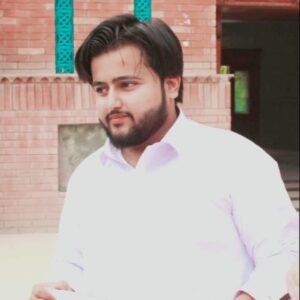
“No matter how long the night is, the morning is sure to come”
I don’t know how to right a story but I will share my short story in my own words. In my point of view hemophilia is the same life with extra hard struggle, which gives you extra skills, extra strength and extra patience. In my birth my parents knew that I have some weird abilities hahah yeah joke! Which ruined my whole childhood.
After all those historical Lockdown days of the world, people understand how you feel isolated in your schools, in your home, in your Eid/Christmas. That’s what I feel for past 15 years of my life with Deficiency of Factor VIII. But in hemophilia’s isolation gives you strength and safety, which prevents Joint Deformity. That’s what I learn!
I remember the night when I was 14, crying a whole night because of severe knee bleed. My father tried every game to change my mind from the pain but nothing worked! And hopelessly said Son: I can not take your pain! And literally he tried everything but “No matter how long the night is, the morning is sure to come”.
After all those non aware years of hemophilia I heard about some hemophiliac communities which are working on hemophilia . I start searching about these communities which are working for themselves. And then I met someone in 2013 who said I have some planes. And we start building a hemophiliac team and then we start monthly meetings, awareness and advocacy with government and government hospitals. I got the first Factor VIII injection from our HTC in 2014. Then finally I got opportunity volunteer on both National/International. Currently I am working as a National Youth Group Member of Hemophilia Foundation- Pakistan.
I got the fully funded scholarship for BS education in 2017 and after four year I completed my Bachelor degree in Agriculture.
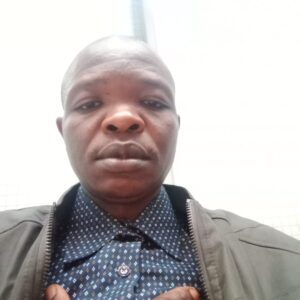
MY PASSION FOR HEMOPHILIA
One and a half decades ago, my son was born (now 16yr old, a high school student). He grew up like any other boy in good health until when he sustained an injury to his upper gum while chewing sugar cane. It was a horrible experience before my son could recover back.
Since his birth, her mother could discover unusual lump swelling beneath his skin as she applied jelly to his skin. At times she could accuse her elder sister of bullying him when she is not around. I remember one day giving corporal punishment to my daughter for these allegations from her mother. The issue of his swelling came to our attention when he developed a larger swelling on his belly that gave us sleepless nights. By then l had acquired an internet-enabled phone which l could google and check for possible causes.
I remember landing on an article that directed me to the Facebook page of a certain Indian guy who was trying to talk something about Hemophilia and its symptoms. His article made a mark on my mind and from that day l started doing a lot of research to know more about what could be ailing my son.
It was until when he got an injury on his gum that the journey to face and know hemophilia started. The day this incident occurred, l and my wife were around and we took an assumption that, as usual, his bleeding would stop. Her mother could wipe the oozing blood from her mouth without paying attention to the continued bleeding. After dinner in the evening, her mother carefully laid him on his bed.
The night was as usual until 6 am in the morning when we discovered bloodshed in his beddings. It was horrible! His face was full of blood and he could not talk because blood had clotted in his mouth making a “lump” making it impossible for him to talk. With the little wisdom we had, we managed to extract that lump of blood from his mouth and opted to take him to Kakamega General Hospital where he was examined and we went back home with sylate tablets as prescribed by the clinician.
Things didn’t work, the following day, it was much worse and we resolved to go to a private hospital where he was hospitalized for being anemic. On the fourth day of his hospitalization, l received a phone call that urgently required me to transfer my son to Kisumu for a blood transfusion, by then l was at my place of work. May God bless Dr. Kedaha for this quick conclusion. Before we could leave the hospital, the doctor gave us a transfer letter to Obama children’s Kisumu JOOTRH that called for a coagulation test to show the clotting time of my son’s blood.
At Kisumu, Obama children were another nightmare to get blood for transfusion. It was then that l came to learn that, donating blood voluntarily is more important. I had donated blood at Kakamega before leaving but unfortunately because of the condition of my son that required urgency, the blood could take more time for screening for it to be ready since there was none at the blood bank.
My son situation continued to worsen, her mother had no hope, but God never fails. It was on Thursday morning when a team of doctors and medical superintendent were on a normal routine checkup for patients, came across my son and a madam in civilian with a label on her chest “Med sup” went through his file and inquired why My son hand not been transfused with blood. The conversation that followed was if l has ever donated blood voluntarily. My answer was that l donated blood at Kakamega for my son a statement that irritated her mind. “you are selfish, when people volunteer to donate blood … you feel it is a waste… now whose blood do you want to be given to your son…? “These words were too harsh for me considering the situation of my son. But finally, my son received blood in the evening, and his eyes that had stayed closed opened.
This gave us hope as we struggled to let him bite his favorite fruit sweet banana. A few days later, we have discharged with a clarification that my son’s clotting wasn’t normal. We were then referred to book a clinic near our residence of which we opted for Dr. Kedaha’s clinic, who later referred us to Kenyatta National Hospital where my son was diagnosed with hemophilia A severe. My son resumed his normal health gradually although his memory was affected such that he could not name objects and understand simple instructions at the age of five for 6 months. Briefly, he has undergone a lot of external and internal bleeding. His school life has been on and off because of bleeding.
Access to treatment has been a challenge whenever he gets an injury. The nearest treatment center for care for Hemophilia was only at MTRH Eldoret which is 100 km from our residence. Doctors, clinicians, and nurses have played a big role to educate us about home care and self-infusion. His first prophylaxis was when he had a swelling knee. He could not walk nor stand, but the following day after prophylaxis my son walked although with the aid of support.
Factor as treatment product has been the main alternative to his bleeding both external and internal. By prophylaxis, his circumcision was successful at the age of 7 years. The year 2021 after developing inhibitors, he was introduced to Hemlibra treatment product that is more effective than factor. Hemlibra has really changed his life by reducing the multiple bleeds he used to have. This has enabled him to attend classes regularly and likewise reduced the cost of treatment and uncured expenses.
With the changing world and technology, we hope one day, gene therapy that is more effective will reach every hemophiliac. As a caregiver, we appeal to our government at the local and national levels to consider budgeting for treatment products for hemophilia patients.
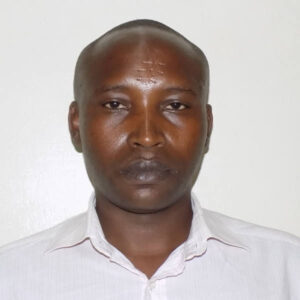
My name is Mosongoh, a Kenyan man aged 43 yrs. I have hemophilia. I was diagnosed when I was 3 years old, and ever since then, it’s been a constant presence in my life. Hemophilia is a genetic disorder that affects the blood’s ability to clot properly, which means that even a small cut can be dangerous. In Africa, this condition puts a person affected with hemophilia in very dangerous situations, due to cultural beliefs. Growing up, I had to be really frustrated most of the time the community did not seem to understand why I had to bleed profusely with a small cut, and in school, it was not any better.
My mother made sure I didn’t do anything too risky while my father did what to have anything to do with me, she had to take me to the hospital every few weeks to be transfused with blood and this made to be known as a village blood drinker, I was not allowed to play with other kids in our neighborhood as I was referred as a breeder one by the parents of my friends in the village.
Despite all the precautions, I still had some close calls. My joints started to have internal bleeds. One time, when I was playing with my little sister, I accidentally fell down and started bleeding heavily on my forehead. My parents had to rush me to the hospital, where I got surgery and a transfusion of blood.
As I got older, I started to feel really frustrated with my condition. I couldn’t do the things my friends were doing, like playing sports, having girlfriends, or attending village parties. I also had to be really careful about what I ate and drank since certain foods and alcohol could interfere with my clotting.
But over time, things have improved since the World Federation of Hemophilia started to donate factors products. I have learned to adapt and cope with this condition and I have found other things I’m good at, like playing chess. I have started to realize that having hemophilia had given me a unique perspective on life. I know that every day is a gift, and I have learned to appreciate the little things.
Now, as an adult, with my dear wife Daphine my daughters, Laurie and little Anne I’m grateful for the life I have. I know that hemophilia will always be a part of me and my family, but I also know that it doesn’t define us. I’m more than my condition, and I’m proud of who I am.
For now, our government has not given any commitment to provide medication for persons with hemophilia. Hopelessly have no space in my heart. The future of hemophilia is bright.
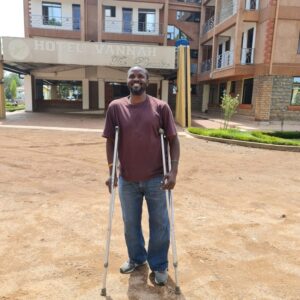
I am Ben Maoga Mosongo,34 years old, a Kenyan who has moderate Hemophilia A. Professionally am an electronic mechanical. I was elected to serve as the executive board member of the Kenya Hemophilia Association (KHA) where I represented patients with needs.
To me, Hemophilia is life-threatening with all I have experienced. I have gone through a lot living with hemophilia, and sometimes am in denial. Today I have a pseudotumor that has really affected my capacity to execute many functions. Am not sleeping like other normal people due to the location, size, and pain from the pseudotumor. Most of the time I sit till morning and my life is full of distress, can’t walk or stand for a long time.
In old times, we were in darkness because accessing health facilities with the capacity to offer hemophilia treatment was a nightmare. We used to travel long distances for medication and by then the only treatment available was fresh frozen plasma and cryoprecipitate. Sometimes our parents paying attention to our health needs was inadequate due to other competing demands resulting in deformities. The most challenging thing is sometimes you feel rejected by friends, only a few stick around, and those who have gone through the same journey. My kids always ask me when will I walk like them. What really happened daddy? and many endless questions.
Nevertheless, I really thank God because there’s a relief that there is access to factors and other treatment products that we use to manage bleeds and relieve our pains. This has been possible through goodwill from well-wishers like the World Federation of Hemophilia (WFH) who donate factor products to Kenya. Currently am using crutches as the pseudotumor on my left side has really brought so much stress on my movements but with the continued prophylaxis with factor VIII, I hope it shrinks to an operable size.
God is so great because my family is always encouraging me. I also thank God for my physician and nurses for being there with me all through and helping me cope. Am hopeful I will get well soon. My wish is for the government of Kenya to recognize the needs of people living with Hemophilia and enhance access to treatment.
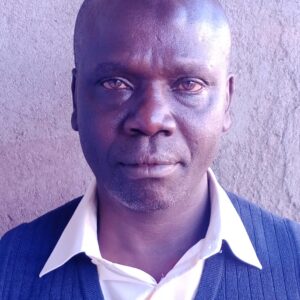
Today, allow me to go down memory lane and narrate about a condition that changed the trajectory of my life as a father- a caregiver.
I had been uninformed about Hemophilia until 2009 when I set foot at the doors of Kenyatta National Hospital where I got enlightened on Hemophilia. This was the day that not only proved most fruitful along the lines of seeking medication for a ‘disease’ (so we thought), that we didn’t have a clue about but also the day that I knew that my sons’ bleeding condition was neither a disease nor a curse but a manageable bleeding disorder.
Since 2004 when my third-born son (Now 20yr old) started showing symptoms such as swelling of joints and rampant nosebleeds life hasn’t been quite as usual. The case doubled in the year 2005 (Now 18yr old) when we were blessed with another child who was hemophilic. Frequent visits to and from the hospital started becoming a norm to the extent of absurdity let alone the constant fear of my two sons losing their lives to Hemophilia. (Both of them have Hemophilia A)
Because the two hemophilic kids had to constantly play regardless of their being vulnerable to bleeds, most of the time they came back home either bleeding or with swellings. This meant that their siblings, mother, and I, had to find ways to stop the bleeding or suppress the swelling which at times translated to less sleep or no sleep at all.
Back then, factor was something unheard of and the use of crude ways to stop the bleeds seemed to even worsen the symptoms. I remember even rubbing a hot wet towel around a swelling with the intention to reduce it. Little did we know that we were making it worse instead.
Compounding the reality that a lot more ground on Hemophilia in Kenya had not been uncovered, many cultural norms and practices added insult to the injury we already had. The never-ending prejudices from neighbors and the community that insisted on primitive courses of action pushed us as a family to the edge. Some even went to the lengths of terming us as a cursed family.
This notwithstanding, we trudged on as a family nursing our hemophilic sons and siblings. However, we had to live with the truth that whenever one of them got injured they had to pause their education and stay at home until the day they recovered. Such a case came in the year 2008 when Allan- the second hemophilia son had to stay at home attending to his swollen knee for a whole year without access to education or proper treatment.
Fast forward to the present times, tables have turned and life has become even more bearable, to say the least. Thanks to easy access to medicine, hospitals, and even a community of hemophilic families that can lend a shoulder to lean on. With organizations such as the Kenya Hemophilia Association and the World Federation of Hemophilia coming to our rescue, we rest assured that the provision of factor products will always be within our reach.
Today, it is safe to say that periodic hospital visits, hefty costs of transport, and missing school just because of a minor bleed are now something of the past. This is because home-based treatment is now common as the two hemophilic kids can administer their prophylaxis treatment even without the help of a doctor. This has cut a lot of costs such as maintenance and transport costs which certainly had an impact on our living standards as a family.
That we are headed for promising times in the near future is clear from the decibels of modern technological advancements, medical development, and a great deal of financial support alongside the availing of medical infrastructure concerning Hemophilia. Yet, despite these advancements, some underlying concerns can be taken into account for a better tomorrow.
A good start would be training other affected members of the family on how to handle their hemophilic siblings such as administering prophylaxis, how to handle bleeds and even ways of treating nosebleeds. These can be made through online training and education amongst other channels.
Along awareness lines, in my view, the hemophiliacs themselves besides their siblings can be a conduit for mass awareness of hemophilia and its effects. This is because they are the ones affected firsthand. Armed with the knowledge they have acquired over the years; they stand a chance to be upfront in the battle of ending deaths accruing from this bleeding disorder. Perhaps this is the surest way to bridge the gap between the already known and unknown hemophilic in the whole world. Who knows?
Furthermore, the provision of guidance and counseling to the affected family members will also go a long way in the reduction of depression caused by constant witnessing of the agony that hemophiliacs go through. To be frank, as a father, I have seen the effects of agony spread all over the family members whenever one of the hemophilic kids gets injured or gets hospitalized.
Moreover, with the utilization and availability of technological instruments such as laptops and smartphones, families can now be virtually assisted whenever an injury occurs without necessarily visiting the hospital.
In retrospect, comparing how life is now with long before we got enlightened, I consider it a blessing to have known the bleeding disorder at the opportune moment. Life now is snug and above all, knowing that my two hemophilic sons are going to readily access treatment gives me a sense of serenity. Many thanks go to all organizations and friends that stood by our family in combatting hemophilia and its effects. Surely, the synergy that has been in play has borne fruit in the long run!
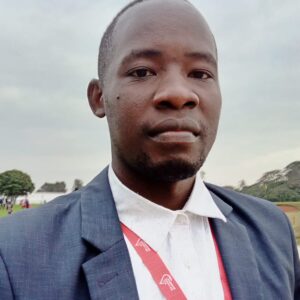
My name is Dennis Rutto, I have severe hemophilia A. I was diagnosed with the condition in the year 2012 after I had undergone circumcision. Early diagnosis was missed due to a lack of knowledge among my parents and the community at large. Having the kind of health issues I had was considered a curse, which resulted in a lot of stigmatization, disability in major joints due to lack of proper treatment, and seclusion. Since my diagnosis, I have been receiving factor infusions only on demand as we do not have enough factor supply for prophylaxis as a country, and through this, I have seen a drastic change in my bleeding episodes, reduced pain and suffering, and a dramatic drop in the number of times I have needed hospitalizations. Overall, my quality of life changed for the better allowing me to be an independent young man with a Diploma in Health Records and Information Technology working with the Ministry of Health. My prayers and wishes are that the government and other partners work together to provide access to essential hemophilia treatment products in the country to support both on-demand and prophylaxis in line with enhancing universal coverage and treatment for all.
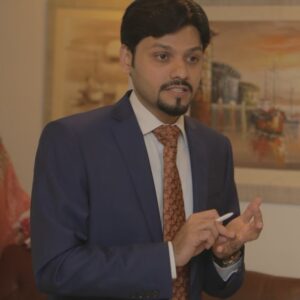
“Being a hemophilic is just a matter of adopting a diverse lifestyle that is more protective and safe”
Growing up in a developing country with Hemophilia meant more than discomfort, pain, and disability to me. I remember the times spent lonely at home, away from friends. At times, friends were reluctant to include me in games due to the fear of the disease that I would end up with an injury or a severe bleed. During childhood, my playtime was well guarded, excluding me from all school/extracurricular activities. I felt deprived of my entire childhood and it gave me an inferiority complex. Growing up as a teenager was not easy either.
The social stigma that surrounds Hemophilia has adverse effects not only on the patients but also on their relationships with family, friends, and colleagues. As the disease progresses, It can cause a condition of caregiver burnout for the family members, and they may also be affected by the stigma often attached to the disease. I was diagnosed at the age of 14 months with hemophilia “A” [severe factor VIII deficiency]. In the early 1980s, there was nothing much to treat my condition except FFPs [fresh frozen plasma] in Pakistan. Because of knee damage, I needed a leg brace by the age of ten and depended on crutches and a wheelchair at different times. I give my parents great credit for teaching me that life is manageable and I was never allowed to feel sorry for myself. I’m so blessed to have a caring wife and a lovely daughter.
Later at the age of 12, I was tested and got positive reports of co-infections. My physician and my father decided not to disclose the results of the test. I was quite young to digest the details. At the age of 22, upon knowing my status of co-infection, the whole world collapsed around me. Hopes were shattered and life seemed to have come to standstill. My friends started avoiding me and my workmates preferred not to interact frequently. I visualized several things to suppress the reality until finally I surrendered myself to Allah. First question that came to my mind was “WHY ME?” Then I looked for answers; “Allah only burdens those capable of bearing the burden”. I have gone through many trials and surely there is a reason…Allah tested me. Then I read a verse from the Holy Quran; trials given to people are commensurate to the courage they have. Rather than being sad, I felt proud. Living with a chronic disease along with Hemophilia teaches you how to persevere and cope with adversity.
Having transcended my fears, with the belief that the future lies in Allah’s hands, I live each day positively and with the courage to face the uncertainties and complications sourced by Hemophilia and my co-infection. I have seen life as not as simple as others have; the challenges I faced have given me the resolve to not only help myself but also others. In my teenage; I decided to volunteer for the hemophilia cause by joining the local Hemophilia Society in 1998. I’m currently serving Hemophilia Foundation-Pakistan [HFP], as a “Community Advisor”. In my previous role, I served for eight years as President of PHPWS and represented Pakistan on many national, regional, and international platforms. As a patient activist; I have been advocating to achieve treatment for all those living with bleeding disorders. I strongly believe in the greater involvement of Hemophiliacs at all decision-making levels. After doing my Master’s degree in Business Administration [MBA]; I got an opportunity to work for United Nations. I believe education and determination to face the reality can lead hemophiliacs to a healthier and more successful life.
Здравствуйте, уважаемые сотрудники WFH!
Узнав о том, что скоро будет Всемирный день гемофилии, решила написать вам благодарственное письмо. Вот уже более 50 лет вы сосредоточены на помощи и спасении больных. И сегодня, благодаря вашей деятельности, диагноз “гемофилия” перестал быть смертным приговором. Спасибо вам огромное за то, что посвятили этому свою жизнь!
Скоро христиане будут праздновать Пасху. Всем известно, что Иисус Христос воскрес из мёртвых. Однако, не все знают почему Он умер. На этот вопрос исчерпывающе отвечает Священное Писание: “Бог любит мир так сильно, что отдал своего единородного Сына, чтобы каждый, кто в него верит, не погиб, а обрёл вечную жизнь” (Евангелие Иоанна 3 глава, 16 стих). Из любви к людям Бог отдал своего дорогого Сына в жертву, а Иисус, в свою очередь, согласился принять мученическую смерть ради того, чтобы избавить человечество от греха и смерти, который мы унаследовали от первой человеческой пары. Грех можно сравнить с генетическим заболеванием, которое передаётся от родителей к детям. Христос, своей жертвенной смертью, открыл перед человечеством возможность жить без этого угнетающего “заболевания”. Вскоре послушные Богу люди смогут жить вечно, без боли, страданий и даже смерти.
Спасибо ещё раз за ваш ценный труд!
Желаю успехов в труде, и крепкого здоровья вам и вашим близким.
С уважением, Наталья.
Hello all,
As the editor of the WFH News page, I’m always covering the latest news in hemophilia, and sharing the latest developments for people with bleeding disorders. It’s a rewarding job, but the most interesting day of the year for me is World Hemophilia Day, because that’s when I get to read heartfelt stories shared by people from around the world. It’s really inspirational to read about your courage, and your strength! Keep it up. I look forward to hearing more from you, as I know the the other people in our community do.
Mitch
Editor, WFH News
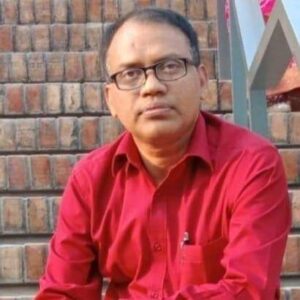
I am a severe hemophiliac with factor-VIII deficiency. I am from a remote island district of Bangladesh. I passed my early life without any treatment but to use ice available in fishing village near our village home. Yes I had a very critical life during my school life still I was able to complete my school education with good grades and able to get admission into Dhaka University, which actually changed my life’s goals. Then I got to be able to get in touch with WFH and Mr. Ashok Verma, the founder of HFI. He guided me to establish Hemophilia Society of Bangladesh.
And I have been working with HSB for last 28 years. It’s my pleasure to be a part of great transformation of HSB to new dimensions and the changing approach of government towards hemophiliacs is a great achievement of my life. We are now getting some factor support from government.
I am an avid solo traveler and enjoy my vacation days around the country, sometimes outside country. My physical disability cannot stop me to go around and enjoy my life. Yes I am fond of adventure traveling, whatever my body permits. I love my life, I love hemophilia, it infact strengthen my life.

Celebrating World Haemophilia Day 2022
If you have not seen or heard of heroine’s, here is one that inspires my work. Ba Egrain Ngandu from Kasamba village, Chief Hanjalika, Mazabuka District, Southern Province.
The woman you see in the two picture with her husband gave birth to 18 children of which 9 died because of haemophilia.
Trust their last son living with the condition is a clear testimony of how donated products by the World Federation of Hemophilia WHF have transformed the lives of the people living with haemophilia in Zambia.
I am greatly inspired.
Happy World Haemophilia Day to the bleeding disorders community around the Globe.
I have Severe Hemophilia A and have suffered from many complications from it. The continued support of organizations that help people suffering from this debilitating disease and all the help from supporting friends, family and colleagues has allowed me to live a relatively great life. Hoping the best for everyone who is suffering from Hemophilia. Goodluck!
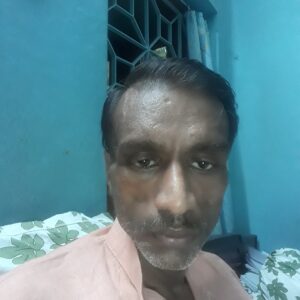
I am a patient with HEMOPHILIA, I was diagnosed at the age of 10 months. Later I was found Sero Positive in 1996. I was the first patient of The Haemophilia Society Calcutta Chapter who started Anti Retroviral Therapy. This year my DIALYSIS HAS STARTED SINCE JANUARY 2022 as my kidney stopped to work. Again I am the first patient of the Haemophilia Society Calcutta Chapter who is on PERITONEAL DIALYSIS which is too expensive for me.
The H.T.C. of Calcutta Chapter has helped me a lot in my crisis period. I am thankful to the Haemophilia society Calcutta Chapter, Hemophilia Federation India, World Federation of Hemophilia.

I’m Syed Shabistan, a severe Hemophilia A from Peshawar, Pakistan.
I’m the part of spreading the WFH awareness campaign about bleeding disorders all over the globe & especially want to aware & facilitate my own community members of Hemophilia Patients Welfare Society Peshawar, Pakistan
اسمي رنا الصيفي وانا مسؤولة الشرق الاوسط في الاتحاد العالمي للهيموفيليا منذ عام ٢٠١٥.
الاحتفالات الرائعة باليوم العالمي للهيموفيليا في جميع أنحاء العالم وخاصة في منطقتنا العربية مدعاة للفخر والسرور معا. لدينا منظمات وأعضاء مجتمع افراد نزف ملتزمون بشدة، ومبدعون ونابضون بالحيوية في معظم دول الشرق الأوسط (آمل أن يجد أولئك الذين يكافحون مصدر إلهام للحاق بأقرانهم في اسرع وقت ممكن). إنكم تثبتون لنا يومًا بعد يوم ، مدي شجاعتكم وباسكم والتزامكم في الدفاع عن حق الجميع للحصول علي العلاج بشكل أفضل. أرق التحية وخالص الشكر النابع من صميم القلب لكافة مجهوداتكم اليوم وكل يوم. كل عام وانتم جميعا بخير. استمروا في التألق الأصدقاء والزملاء الأعزاء

My name is Tai-il Kim.
I have severe hemophilia A. And I have two sons and a youngest daughter. The daughter is 4 years old and of course a hemA carrier. I usually ask my children to help me when I self-inject to inform them about hemophilia in a friendly way.
Yesterday, I had a prophylaxis with my daughter. For the first time, she succeeded in stabbing the needle, even though I held her hand.
By the time our children grow up and give birth to their children, they’ll have completely overcome their hemophilia, and they won’t get these injections anymore, right?
Today, April 17th, World Hemophilia Day, I wish better treatment for hemophilia and better awareness of more bleeding disorders.
https://youtu.be/HLnTYmFc-aM
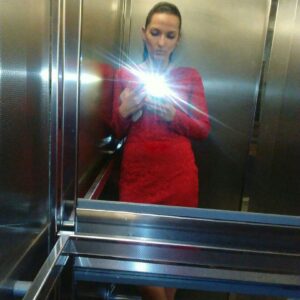
I have Von Willebrand’s disease. The diagnosis was made only 4 years ago. Now I am receiving preventive treatment. It’s scary to remember what happened before this treatment. This disease has severely undermined my health

My name is Atharv Pareek, I have Severe hemophilia A type disease, due to this disease I am not able to go to school properly nor play with friends, I have to go to the hospital 3 days a week to take the factor VIII. By taking the reason of the factor, my joints are still fine, I have thanks to the Government of Rajasthan and the World Haemophilia Federation, due to which I get these medicines free of cost. If such a medicine is made, which is to be given only once a week, then how much relief will it be for me?
Thanks 🙏🙏🙏
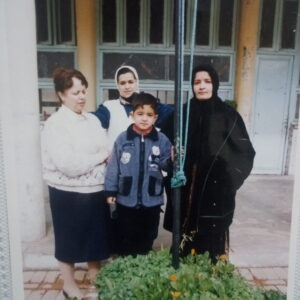
Yes, my story is no difference between it and most of the stories of hemophilia patients at the beginning of my life and at the age of eight months, my mother discovered that I had hemophilia through blue spots on my body as well as bruises. Examination, diagnosis, and providing treatment for me was like a horror movie for my parents, as they knew the disease from before I was born and my son was dedicated to my safety. In my childhood there was a kind of follow-up and control in terms of what games and sports were allowed and not allowed. I was wondering at the beginning of my life why my mother not Do you promise to run and play with the rest of the kids? When I joined a school, it was normal for me, but for my family, it was stressful and tiring (knowing that I have siblings who are sick with the same disease). The aim of this is to make my identity known to all my colleagues, as well as the staff and school workers. I was very happy because everyone knew me and very sad because I could not play with my colleagues. The teacher did not leave me for fear and for my safety. I was very upset. I entered the department first and came out last. And the teacher held my hand until she handed me over to my mother or older sister in order to take me home in the evening at the end of work. I would secretly go outside to meet with my friends to play football, but they would not leave me or invite me because my mother and father had betrayed them from my playing football The foot is the reason that it causes me harm, so I begged them to play just a little bit, so they let me play and pass the ball to me and let me dribble and run without anyone in the way, then we think about football to play hide and seek and several traditional games and in the evening when I come home, my mother tells me no One day you will bleed and you will scold me and keep me at home so that I can go back to my lessons, and then the joint pain starts, especially the knees and ankles. I go to my mother and tell her that I am not okay, so she reprimands me and takes me to the hospital every time … a medical examination, a diagnosis, I take a dose of Factor 8 and go home And my parents are loaded with medicines and I have a needle implanted in my elbows… Relax and then resume playing electronic games and dominoes and read books and review the lessons that I missed under the supervision of my little teacher (my older sister) and my father. Especially at night and I was encouraging myself that nothing would happen to me and I would not repeat mistakes and I would study hard in order to excel and be the happiest of those who worked for me…. Mom and Dad always tell me that you are the reason for what happens to you and that you are a child you put yourself in trouble and Problems because you are not convinced that you are not like other children, my father talks and says that if you do this again, you will not go for a picnic, and I will not buy you what you want, and I will punish without hitting you, I will deprive you of all the things you want, so ask their forgiveness and I will not repeat this and I will I obey them and take care of myself knowing my mother is a nurse and she was always keen on my safety at home At school and outside, she alerts my friends and advises them about my safety. At home, my brothers gather and tell them to be careful of his safety in my absence, me and your father. Do not let him leave the house. Do not create problems with him. If he insists on leaving, call me or your father… .. Such are the sacrifices that parents make for the sake of their children …. I was a son who caused trouble and my daughter used to advise me and teach me the meaning of hemophilia patients and its types and what are its symptoms and dangers, and she encouraged me to practice swimming until I became proficient in it … She taught me how to inject Myself used to give me health education lessons, and my father used to take me daily to school in the morning and come back in the evening to take their advice. I realized it at the age of fifteen when I entered high school. Today, I am a young man, enjoying good health, and following my preventive treatment, thank God, knowing that my knee joints are very affected. Because of inflammation, but thank God I can move and help others, knowing that I am an association founder in my state and a contributor to providing a helping hand to hemophilia patients. Thank you
Speaking Up for China’s Women with Hemophilia: My Story and Theirs
As the daughter of a man with hemophilia, a woman with mild hemophilia myself, and a former sufferer of heavy menstrual bleeding, I cannot remain silent after discovering the vast gap in awareness and care for women with hemophilia in China.
For 18 years, I never suspected that I might have a bleeding disorder—largely because China’s public education and medical resources on hemophilia are outdated, school textbooks still claim that female carriers never show symptoms. I dismissed my heavy periods as normal and ignored signs like frequent bruising and bleeding gums.
It wasn’t until I came across educational materials from the World Federation of Hemophilia (WFH) that I learned: carriers can indeed be patients.
At 18—seven years after my first period—I used the PBAC method for the first time and found I was losing 200 mL of blood every cycle.
At 18—after living with symptoms for 18 years—I took the BAT bleeding assessment and scored a 7.
At 18—just ten minutes before entering surgery for appendicitis—I had my clotting factor levels tested for the first time, discovering they were only at 12%. The surgery was immediately halted.
At 18—I knew for the first time that, I was, in fact, a person with hemophilia.
And I know I am not alone.
Since April 2024, I’ve been traveling across China giving talks and meeting other women with hemophilia.
Many of them do not speak English, cannot use computers, and have never shared their stories—yet their suffering deserves to be heard.
Today, I would like to share the voices of women in China with WHD stories.
Her body had been crying out for help for years, but no one listened—until she nearly lost her life on the delivery table.
She had always bruised easily, bled from her gums, and had wounds that took too long to heal. These symptoms were dismissed as “just being weak.”
Her first challenge came during the birth of her older son. The bleeding was significant, but her concerns were brushed aside:
“That’s just childbirth—it’s normal to bleed,” the doctors said.
Her son was later diagnosed with hemophilia, and she quietly shouldered the burden of care.
Years later, she had a second son via C-section at a county hospital.
She told the doctor: “My older son has hemophilia—should I be worried?”
The doctor replied: “You’re just a carrier. It’s fine.”
It wasn’t.
That night, blood began pouring from her surgical wound. Her bedsheets were soaked.
Panic broke out. The hospital lacked experience and resources.
She remembers hearing her name faintly through a haze, as she slipped in and out of consciousness.
Later, she learned that she had been issued a critical condition notice.
The wound had split open, and the hospital—unprepared and without coagulation factor VII concentrate—barely saved her life using whole blood transfusion.
Only after this traumatic experience did she discover: her own clotting factor was around 20%.
She, too, was a person with hemophilia.
Later, when she needed heart surgery, she knew she required clotting factor.
But unlike male patients, she could not receive insurance reimbursement. The medication would cost over 100,000 RMB(13,870 USD) out-of-pocket, more than her yearly income.
Looking back, she said:
“Every time a doctor dismissed my concerns, every time I got lucky, it was my life they were gambling with.”
One girl from northern China wore thick cotton pants in winter—yet her legs were always covered in large bruises.
Another, from the south, loved jump rope and dancing—but was constantly sore and bruised after play.
The northern girl told herself the blood when brushing her teeth was “just sensitive gums.”
The southern girl thought her childhood nosebleeds were just clumsiness.
Both were anemic and fatigued. Both were told: “It’s just your constitution—be strong.”
Both daughters of hemophiliacs. Both thought they were alone.
Until one day, they met—and realized they shared the same invisible story.
They talked about hiding their symptoms from family, doctors who said: “You’re just a carrier—nothing to worry about,” and the shame they felt about needing accommodations in dating, work, and life.
The northern girl feared hospitals—until she fainted from iron-deficiency anemia(IDA).
The southern girl actively sought care—yet most doctors had never heard of women with hemophilia.
The northern girl used 25 daytime and 6 nighttime pads per cycle. She had to wake up at night to change them.
The southern girl regularly stained clothes and bedsheets, experiencing dizziness and exhaustion during her period.
When they finally estimated their blood loss using PBAC:
The northern girl lost 187 mL per cycle, she lost 85% of her body’s blood volume yearly—equivalent to 4.8 bottles of 500mL
The southern girl lost 203 mL, lost 92% yearly—that’s 5.2 bottles.
The northern girl never tested her factor IX level.
The southern girl tested her factor VIII—only 19%.
They were not merely “carriers.”
They were women with hemophilia.
“I can’t run or play soccer. If I get hit on the head, it could be very dangerous.”
—Ningning, 7 years old, diagnosed with Factor VII deficiency
We met Ningning, a bright, cheerful first grader who loves drawing(image attached).
She enjoys light games like hopscotch and tag—but knows not to do anything that might cause bleeding.
At age 3, she had a nosebleed that lasted two days, ending in a collapse.
Her parents were sent from county to city hospitals, only finding help in a major hospital in Guangzhou.
Her mother recalls: “There was so much blood, it even came out of her eyes.”
Ningning was diagnosed with a rare bleeding disorder: Factor VII deficiency. Since then, her family has faced tremendous pressure.
The targeted treatment—Factor VII concentrate—is not yet produced in China. The only available option is an imported American drug, priced at 5,000 RMB per dose(693 USD), equivalent to the family’s entire monthly income.
Unable to afford this regularly, they turned to a cheaper alternative: a domestic “complex concentrate”, costing a few hundred RMB per dose.
It is less effective and comes with greater side effects—but with no domestically approved Factor VII yet available, they had no other choice.
Ningning is used to injections now. She says: “It doesn’t hurt if I stay still.”
She’s braver than many adults—but she shouldn’t have to be.
She is one of hundreds of thousands of girls and women with bleeding disorders in China, still too “invisible”—to doctors, to insurance systems, to society.
They long to run, dance, and go to gym class—but they need more awareness, compassion, and policy change.
Tingting’s very first period was a crisis. She bled so heavily she couldn’t stay in class.
The blood soaked her seat. She nearly fainted.
She was hospitalized and eventually diagnosed with rare Factor VII deficiency.
Now, every month, she needs injections to control the bleeding.
She’s traveled from hospital to hospital, relying on medication just to live a normal school life.
But after physical activity—running or sports—she suffers severe joint and muscle pain.
No matter how hard she trains, she’s unable to complete her physical education exam.
Her mother says:
“She’s academically strong, but missing 20 points in the high school entrance exam’s PE section might ruin her chances.”
They’ve tried hormonal treatments, but the side effects were too severe.
Now, she comes home after school during her period to receive clotting injections.
When clinics refused to administer the shots, her mother learned to do it herself.
“I’m better than the nurses now,” she jokes.
Their fridge is filled with medicine, not food.
Each vial costs hundreds of RMB. She needs over ten a month. None are covered by insurance.
These stories represent only a fraction of the women I’ve met. They are strong, but they should not have to suffer in silence.
Girls and women with bleeding disorders have long been overlooked in global care systems, and even more so in countries where diagnostic and treatment resources are limited.
In China, many are still undiagnosed, misdiagnosed, or under-treated simply because of their gender.
We established a organization named WGH38417 in China. You could see our efforts at our website. Contact me via Reddit.
We call on the global bleeding disorder community—researchers, clinicians, policy advocates, and patient leaders—to:
The title for 2025 Hemophilia day is ‘Access for all: Women and girls bleed too’.
Let her be heard. Let her be diagnosed. Let her be safe.
MD MOMINUL HOQUE
Founder, Disabled Rehabilitation Foundation (DRF), Dhaka, Bangladesh
Executive Director, Uttara General Hospital Ltd., Uttara, Dhaka, Bangladesh
Chairman, Mayer Hasi General Hospital, Ashulia, Dhaka
At the Disabled Rehabilitation Foundation (DRF), we believe that every individual, regardless of physical ability or financial condition, deserves access to quality healthcare and rehabilitation. Our journey began with a vision—to create a society where persons with disabilities receive the support, care, and opportunities they need to lead independent and fulfilling lives.
Since the year 2015, we have been working regularly with hemophilia patients. Our organization, DRF (Disability Rehabilitation Foundation), has so far been providing medical support to a total of 170 hemophilia patients. The treatment expenses have been managed through personal initiatives and with funding from the DRF Foundation.
In particular, we have been purchasing Factor VIII and Factor IX to provide the necessary treatment to patients. However, bearing these expenses is becoming increasingly difficult for us.
We believe that if the World Federation of Hemophilia (WFH) provides us with factor support, it will serve as a significant financial and emotional relief for our patients. This assistance will help ensure continuous and effective treatment for them.
On this WHD (World Hemophilia Day) 2025, I wish all hemophilia patients around the world good health and a bright future.
We sincerely hope that WFH will stand by us and extend its support in this regard.
Regards
Md Mominul Hoque

Living with Hemophilia, Thriving with Hope!
My name is Siam Ahmed, and 15 years old. Since birth, my life has been a little different – I was born with a rare bleeding disorder called Hemophilia-A. Even a small cut can lead to prolonged bleeding. When I fall while playing, others get up and carry on, but for me, it can turn into a serious and painful ordeal. The bleeding doesn’t stop easily, and the pain is often so intense that it keeps me awake at night.
My family’s financial situation is modest. I have no father, 5 years ago he is died of road accident. My mother is a laborer. The treatment for Hemophilia is expensive – I regularly need a medication called “Factor VIII” to help my blood clot. Unfortunately, I couldn’t always afford it. There was a time, when I truly believed this condition would bring my life to a halt.
That’s when the DRF Foundation (DRF) became my light in the darkness.
DRF Foundation (DRF) didn’t just support me with medicine – they reminded me that I wasn’t alone. They covered the cost of my treatment, arranged regular medical follow-ups, and even supported my education. Their kindness and commitment gave me strength. Because of them, I can now attend school regularly, and more importantly, I have begun to dream again – to imagine a future where I can grow up and help others, just as DRF Foundation (DRF) has helped me.
Hemophilia is a part of my journey, but it doesn’t define who I am. DRF Foundation (DRF) helped me discover the courage to say, “Yes, I can.”
Thank you, DRF Foundation (DRF) , for standing beside me when I needed it most. You didn’t just support my health – you restored my hope.
Hey! I’m Devang, 23, from India. I do freelance social media marketing, which lets me work from home on my own terms. Alongside that, I’m also preparing for government services—that’s the long-term goal.
As a kid, I was super active. But because of low Factor VIII levels, I had to deal with a lot of internal bleeds—some pretty scary, even life-threatening… I remember being in hospital for months multiple times when i was a kid. Still, thanks to my parents’ support and resilience, I managed to have a pretty healthy and active teenage life.
In the last 6–7 years though, things changed. I developed severe target joints, and honestly, it’s impacted my life in more ways than I can count. That constant feeling of weakness, of not being able to do what others around you can… yeah, I know that feeling too well.
But here’s the thing—I don’t see it as a struggle. It’s a fight. Every single day. With the condition, with its complications, and everything it tries to take from you.
What’s helped me? Staying informed. Learning about treatments and management. Being part of the community—online and offline. Talking to doctors regularly. Staying in touch with my local HTC and haemophilia chapter.
Because of all that—and the people around me—I’ve been able to keep my joints working pretty well. No major deformities so far. Yes, I’ve got haemophilic arthropathy too, like many others. But trust me, there’s always a way to move forward and that’s what I’m doing currently! Fighting my way out to more healthy joints.
You’re not alone in this. Keep learning, keep fighting, and most importantly—keep showing up.
If you wish to connect, my email is: devangagarwal0211@gmail.com
Professor of Hematology
Bangabandhu Sheikh Mujib Medical University (BSMMU), Dhaka, Bangladesh
HTC, Chairman- Lab One Foundation & Director, WBDR- HTC (BSMMU)
We are currently providing care and support to over 800 registered hemophilia patients through our Hemophilia Treatment Centers (HTCs) at BSMMU and Lab One Foundation. Our services include outpatient, inpatient, and emergency care facilities tailored specifically for individuals living with hemophilia.
Most of the treatment factors we administer are generously provided through the Humanitarian Aid Program of the World Federation of Hemophilia (WFH). Due to the limited supply, implementing a prophylaxis protocol remains a challenge in our HTCs. We sincerely appreciate WFH’s continued support through factor donations and the WBDR HTC Support Awards, which are invaluable to our operations.
Our dedicated HTC nursing staff regularly participates in online training programs organized by the WFH WBDR team, which has significantly enhanced the quality of care we provide.
We proudly celebrated World Hemophilia Day (WHD) 2025 through a series of impactful events. These included an awareness rally, a scientific session, and a round-table discussion involving key stakeholders such as the Rotary Club, Director General of Health Services, Ministry of Health, university authorities, social workers, and representatives from print and electronic media.
I am honored to serve as the Chief Coordinator for the development of the National Hemophilia Guideline, which has now been finalized and is awaiting official declaration.
The Government of Bangladesh has also extended support in purchasing clotting factors for selected government HTCs. However, HTC, BSMMU and HTC, Lab One Foundation (LOF) are non-governmental organizations and thus rely entirely on humanitarian aid and philanthropic contributions. HTC LOF operates 24/7 with full emergency facilities, including a blood bank, laboratory, operating theatre, and a dedicated team of doctors, nurses, and support staff.
One of our patients, Sadian, a 17 years old with Hemophilia A who has developed inhibitors, is currently receiving treatment with Emicizumab.
Given our ongoing needs and the rising number of patients, I would like to kindly request WFH to consider extending their support further through factor donations and WBDR HTC Support Awards.
We remain hopeful that World Hemophilia Day 2025 will mark a new era in ensuring access for all, especially in line with WFH’s current focus on bleeding disorders in women and girls.
Warm regards,
Prof. Dr. Md. Salahuddin Shah
Professor of Hematology
Bangabandhu Sheikh Mujib Medical University (BSMMU), Dhaka, Bangladesh
I am Khandaker Amirul Islam, Haemophilia – A patient working as a volunteer & patient counselor of HTC Lab One Foundation. My WBDR ID number is 28569, HTC Lab One Foundation, Uttara – 1230, Dhaka, Bangladesh.
@Success History@
Last four months ago, suddenly I felt severe chest pain & attended at HTC LOF. I was a regular attendee for my routine follow up at HTC Lab One Foundation under Professor Dr. Md. Salahuddin Shah.
He arranged for my admission under his supervision at BMU ( BDMMU). And finally after angiography I had been got two heart rings implanted in my heart from Cardiology Department of Bangladesh Medical University (BSMMU).It was a very difficult task for me and it was not so much easy that it could be done from any place but by the grace of Almighty Allah Prof.Dr. Md. Salahuddin Shah & Cardilogy Department helped me a lot. I have received required factors from HTC LOF, HTC BSM ( BSMMU) & NMO (HSB). Fortunately my life is safed. I am grateful to WFH Humanitarian Aids HTCs & HSB.
Now I have to take Factor Vlll after every 15 days.
Most of the haemophilia patients in our Country are very poor. So we need increased number of factors for our survival.
We have observed World Hemophilia Day 2025 through rally, Scientific seminar & patients counselling at HTC LOF.
I sincerely appeal to the WFH Humanitarian Aid & WBDR team to consider allocating more clotting factors to HTC, Lab One Foundation & this HTC remained open for 24 hours.
I believe this will enable the organization to save the lives of many more hemophilia patients and continue to provide compassionate support to them.
On this special day, I wish all hemophilia patients around the world good health and a bright future.
My son Owen has severe Hemophilia, today my office show support and love. Team Owen!!!

I am Hafizur Rahman, WBDR Data Management and Patients Councilor, HTC, Lab One Foundation, Dhaka, Bangladesh.
From my professional experience, I have closely observed the sincere and selfless efforts of the Honorable Sir Prof. Dr. Md. Salahuddin Shah, Chairman of Lab One Foundation, who has always stood beside hemophilia patients. He has been relentlessly working to ensure their healthy lives by providing free treatment, essential medicines, fresh frozen plasma, and clotting factors.
Through regular communication with patients and listening to their stories of daily struggles, I have come to realize the immense battle they fight every day just to survive and stay healthy. Especially when unexpected bleeding occurs in any part of their body, Lab One Foundation, always remains prepared to provide the necessary medicines, factors, and fresh frozen plasma as swiftly as possible.
I would like to express my heartfelt gratitude and deep respect to the Honorable Sir Prof. Dr. Md. Salahuddin Shah, Chairman and the entire team of HTC, Lab One Foundation, for their compassionate and humanitarian efforts.
On the occasion of World Hemophilia Day 2025, I sincerely appeal to WBDR to kindly consider the allocation of clotting factors to HTC, Lab One Foundation, . I believe this will enable the organization to save the lives of many more hemophilia patients and continue to extend its compassionate support to them.
On this special day, I wish good health and a bright future to all hemophilia patients around the world.

“A Silent Bleed, A Silent Loss”
As a Clinical Haematologist dedicated to serving patients with bleeding disorders, I often meet individuals whose lives have been shaped by unrecognized or untreated conditions. Recently, I encountered a deeply moving case that reminded me how crucial awareness and early diagnosis truly are.
A young woman was admitted to the gynaecology ward during her first postnatal period with uncontrolled bleeding from a surgical wound following an emergency hysterectomy. Her story unfolded tragically: after a Caesarean section, excessive bleeding began and could not be controlled even after uterine closure. The obstetric team, in a desperate attempt to save her life, had no choice but to perform a hysterectomy.
When I was consulted, I delved deeper into her medical history. She revealed she had experienced heavy menstrual bleeding (menorrhagia) since menarche. Yet, due to social stigma and lack of awareness, neither she nor her family ever sought medical advice. Her symptoms were normalized, explained away by vague cultural beliefs and silence.
Unfortunately, that silence cost her dearly—her ability to become a mother was taken away in a moment that should have brought her joy. What could have been managed with timely diagnosis and care turned into irreversible loss.
This story is a painful but powerful reminder: bleeding disorders in women are underrecognized, under diagnosed, and often hidden behind shame or misinformation. We must speak up, educate, and ensure that no one loses their future to a treatable condition.
On this World Hemophilia Day, let us reaffirm our commitment to break the silence, raise awareness, and advocate for early diagnosis and care for all—especially the women and girls who bleed unseen.

“Strengths with Deficiency”
I’m not writing about my so called Royal Disease clotting factor😁, it’s about those moments which are almost deficit from my life, maybe it’s the feeling of majority persons with bleeding disorders.
Your childhood will be ruined by your pressurized limited life, your special events like Eid, Christmas and Diwali or even marriages.
I missed my school life I wish to be punished by my teacher but because of my family doctor they don’t allow my teachers to punish me, i never like to be special (sympathy)boy.
But when the creator take something from you he gives you extra strengths like, Endurance you will not take painkillers for your pain because you knew that, it will not work on your severe pain.
You will always be Aware of coming struggles and your survival strategies.
Sometime there will be nothing left for the cure, but you will Fight like warrior.
Whenever you felt tired in your life you will find your Parents beside you. It’s the beautiful climax of everyone life story, but in our (community🩸) life they have a role of doctors, consultant, physical therapist and nutritionist, sometime friend!
“Life will always hit Hard if you hemophiliac or”
Today is World Hemophilia Day
It has been 3 years since my son was diagnosed with severe hemophilia A. The past years were very challenging for us. Knowing that our country have limited knowledge to rare bleeding disorders, it is also hard for us to look for medical practitioners who knows how to infuse for hemophilia patient.
Recently, our son got into a mild accident wherein he accidentally stumbled and hurt his right foot. He is currently in the province that lacks medical care for patient like him. In order for us to get him treated, we connected to HAPLOS Hemophilia Philippines – an organization for patients with bleeding disorder. I called one of the officers and asked help for the members on nearby areas. Several calls and coordination were made, and luckily we were able to find one. The infusion started and right now he is on recovery mode.
Given that our son is a 3 year old boy and a toddler, it is really hard for us to stop him from moving, as he seeks adventures and obstacles. His pain tolerance is so high that he can endure the pain. But despite that, I am so proud of him being so strong and healthy.
As a mother and a carrier of Hemophilia, I also feel symptoms like easily bruising, heavy menstrual and prolonged bleeding and joint pains across my knees. There are days where the pain won’t let me sleep. But overall, I was able to get through with it.
I am so thankful that even in dark days, the HAPLOS Hemophilia Philippines will always be there as a support system (emotionally and mentally) to mothers like me and patients like my son. Ever since we joined the organization, there was not a time that they did not answer all the inquires I had. They helped me and educated me more about this and engaged with different members.
And to my family especially to my husband, I am so thankful that despite our situation, they are always there to help us during the hard times, added by the people around us who supported us in this journey.
Lastly, as we celebrated the World Hemophilia Day, I want everyone to know that this rare bleeding disorder is just around the corner. To share with them what this is and for them to stop judging the Hemophilia Patients that they are limited on the things they can do, and cannot do normal things like other people does.
If you have any questions, please contact communications@wfh.org.